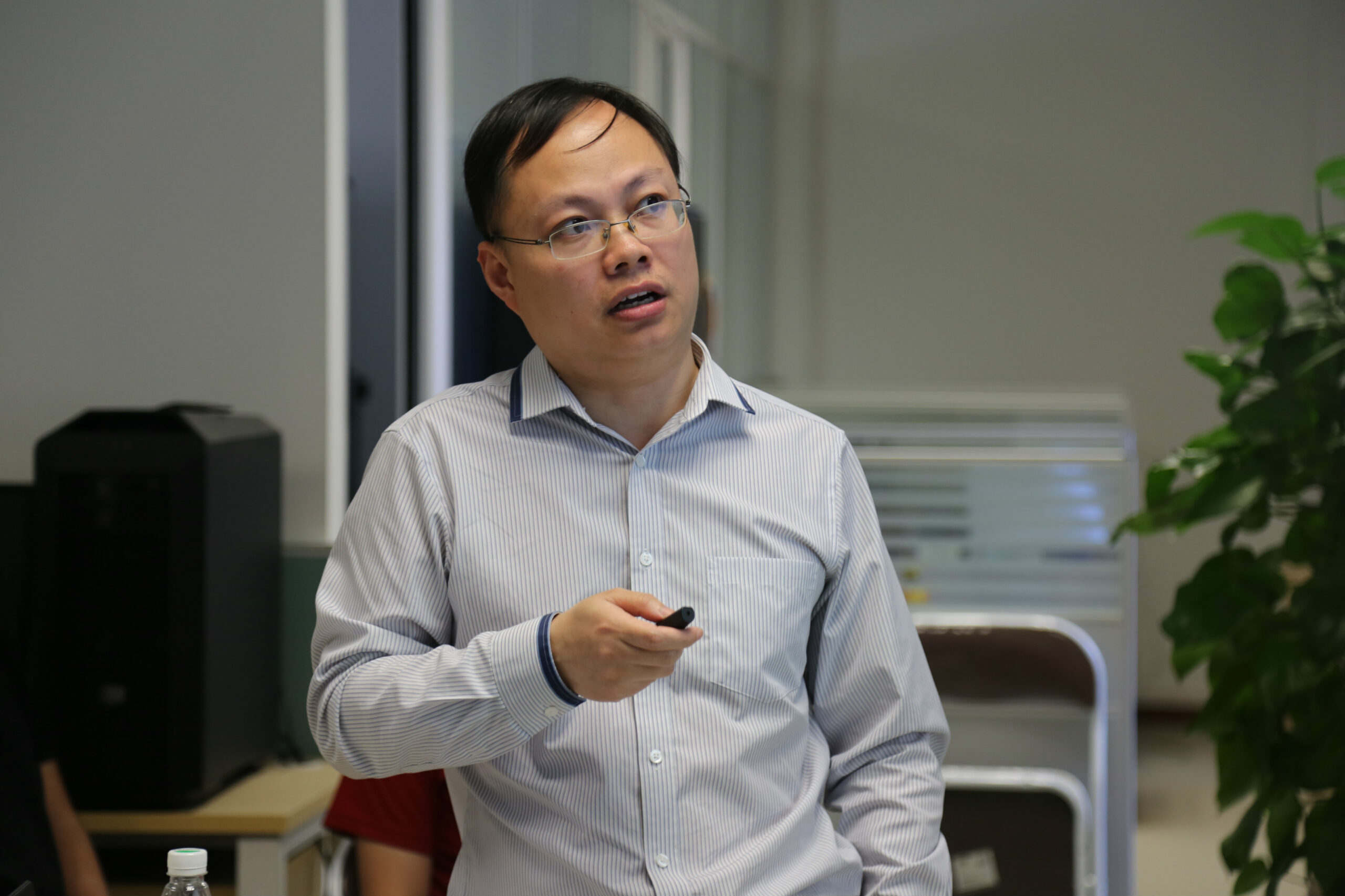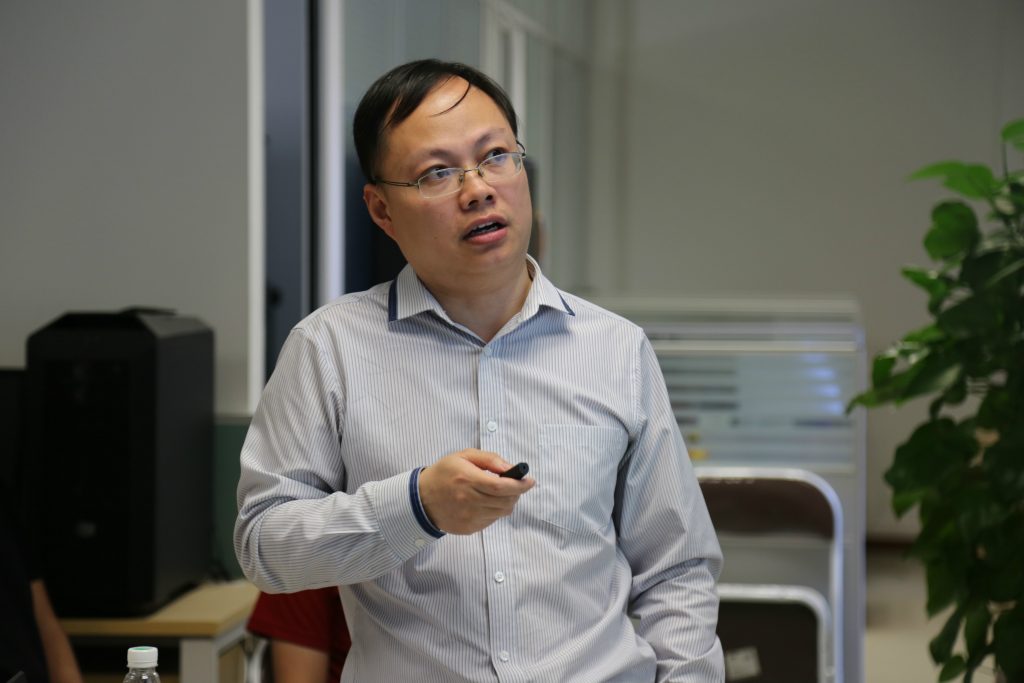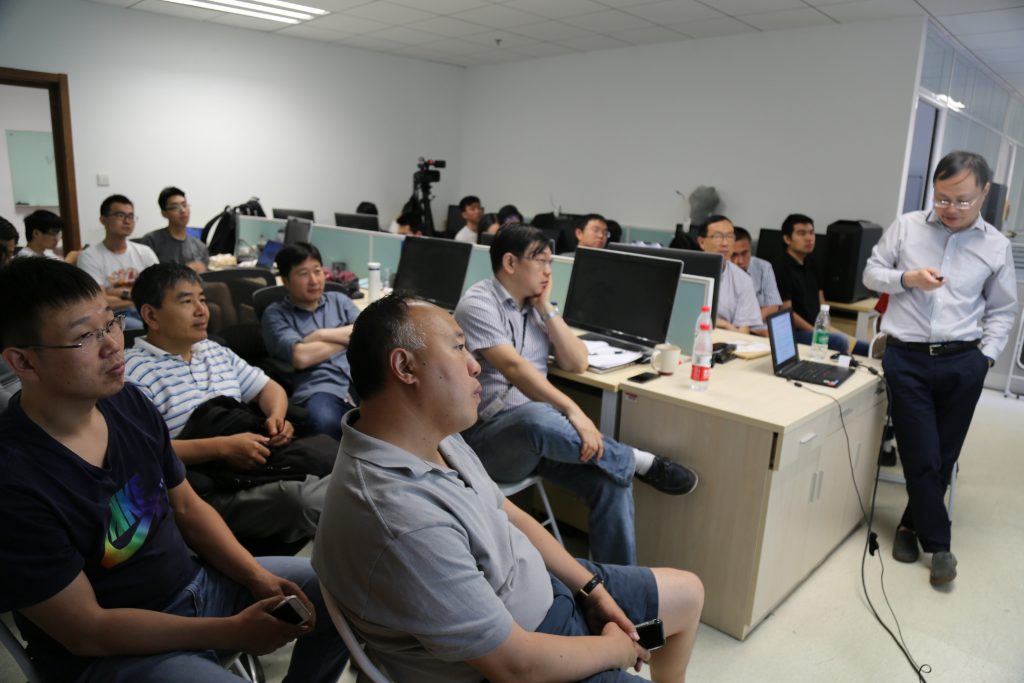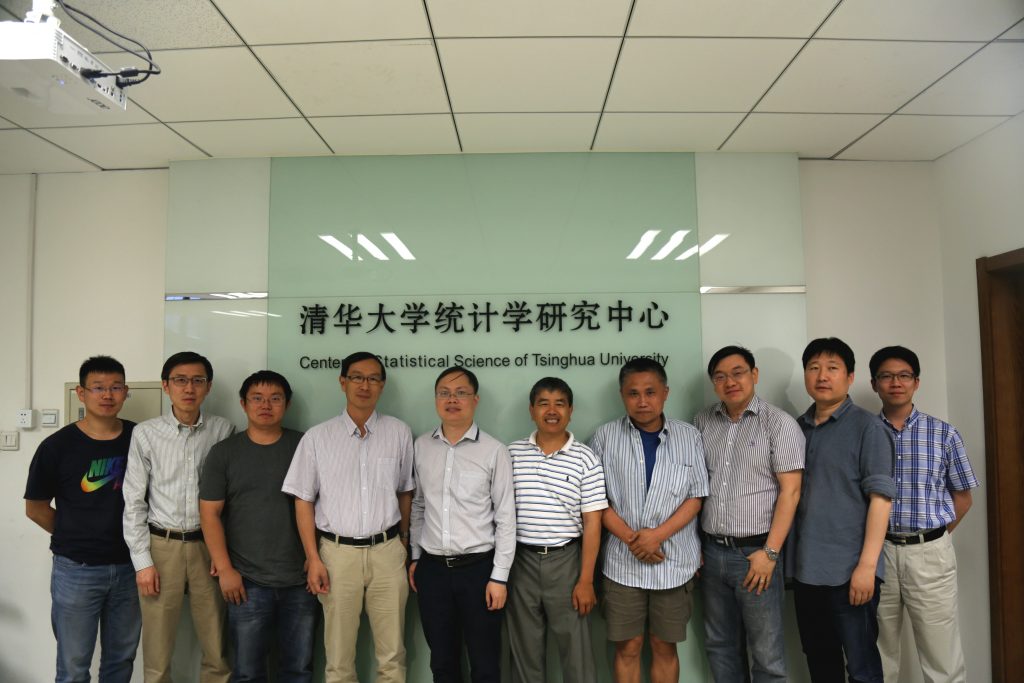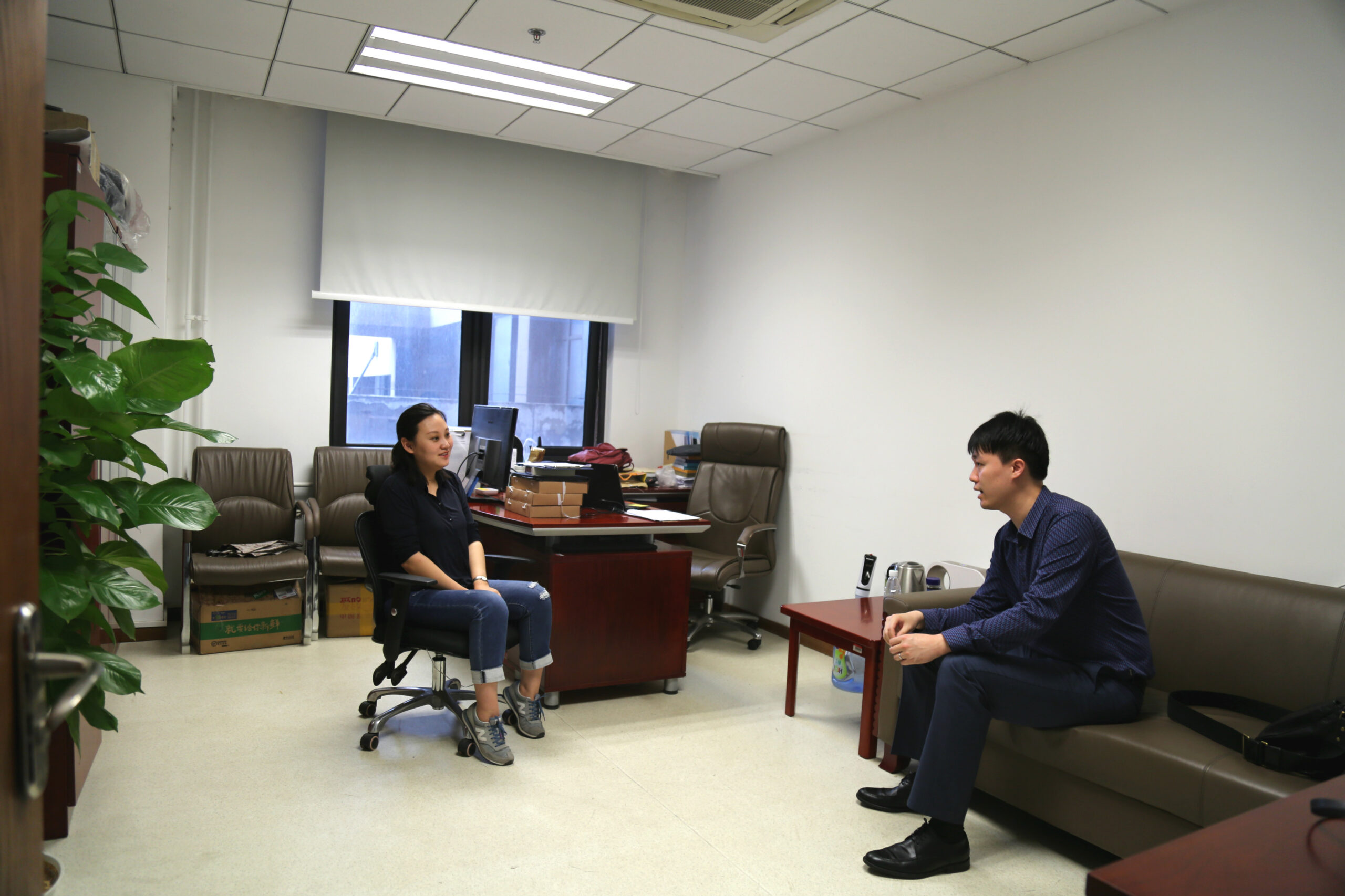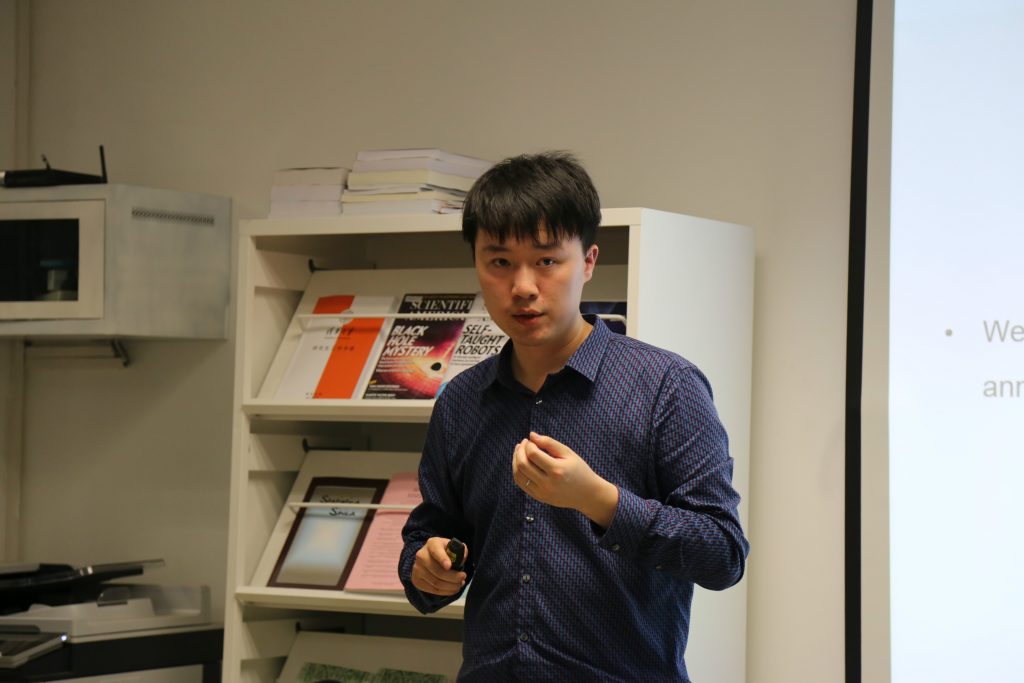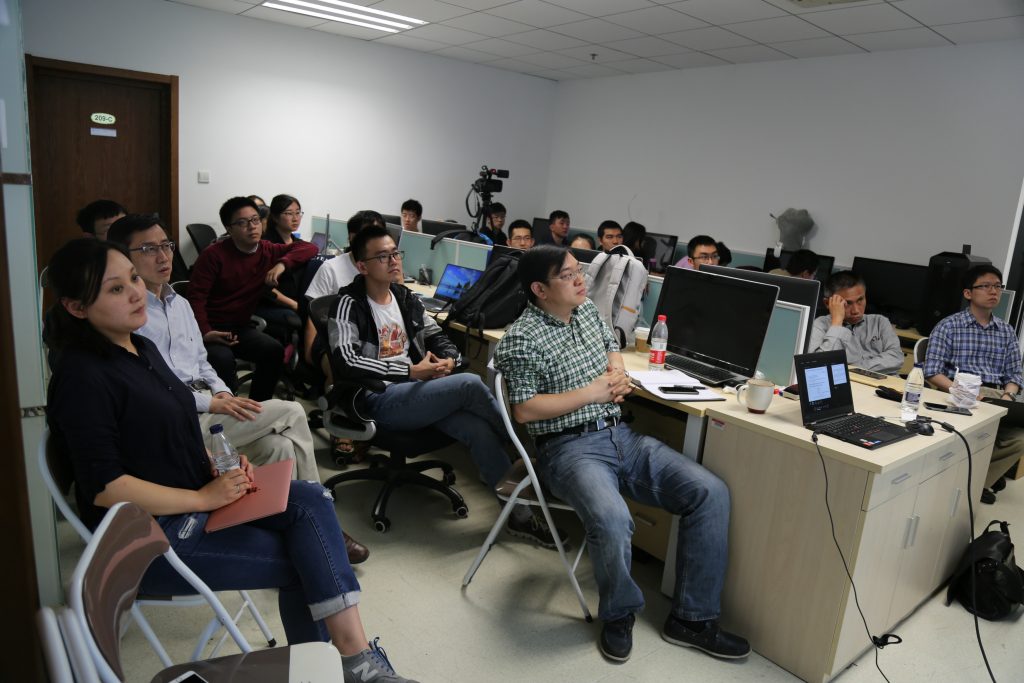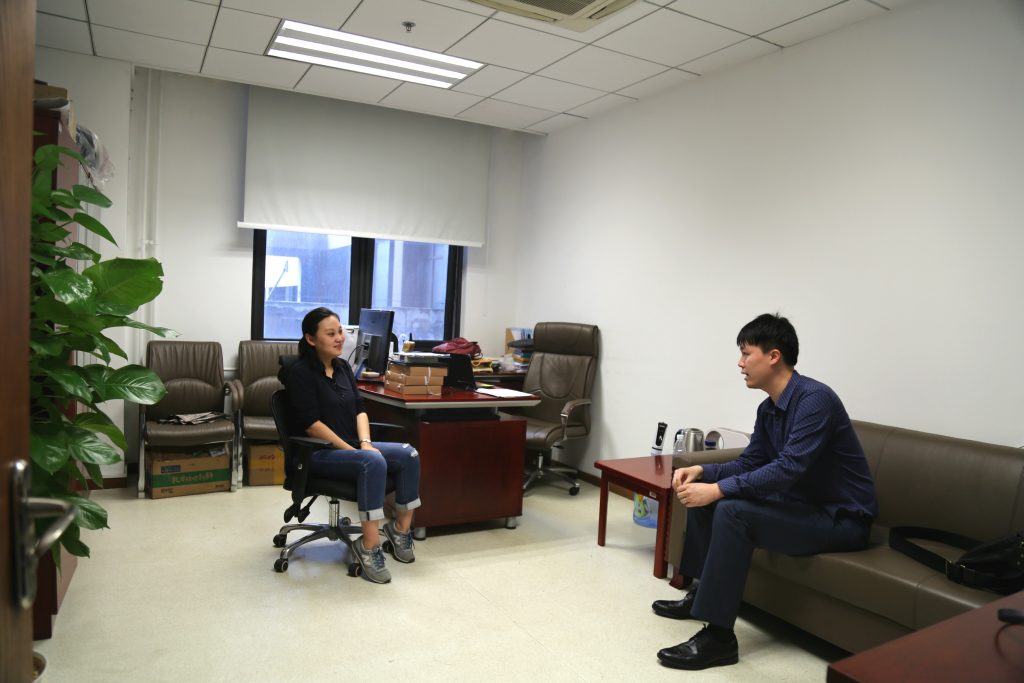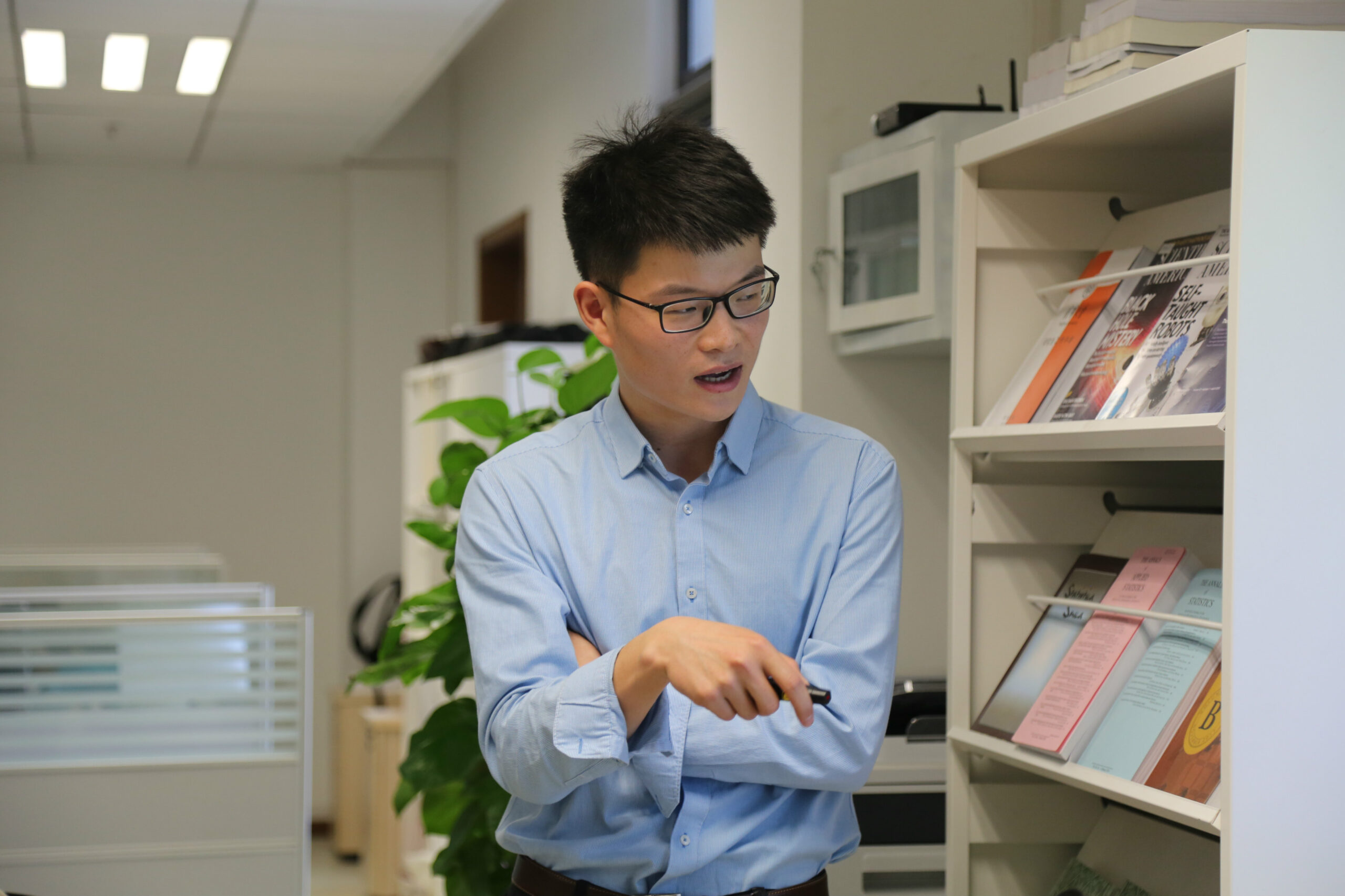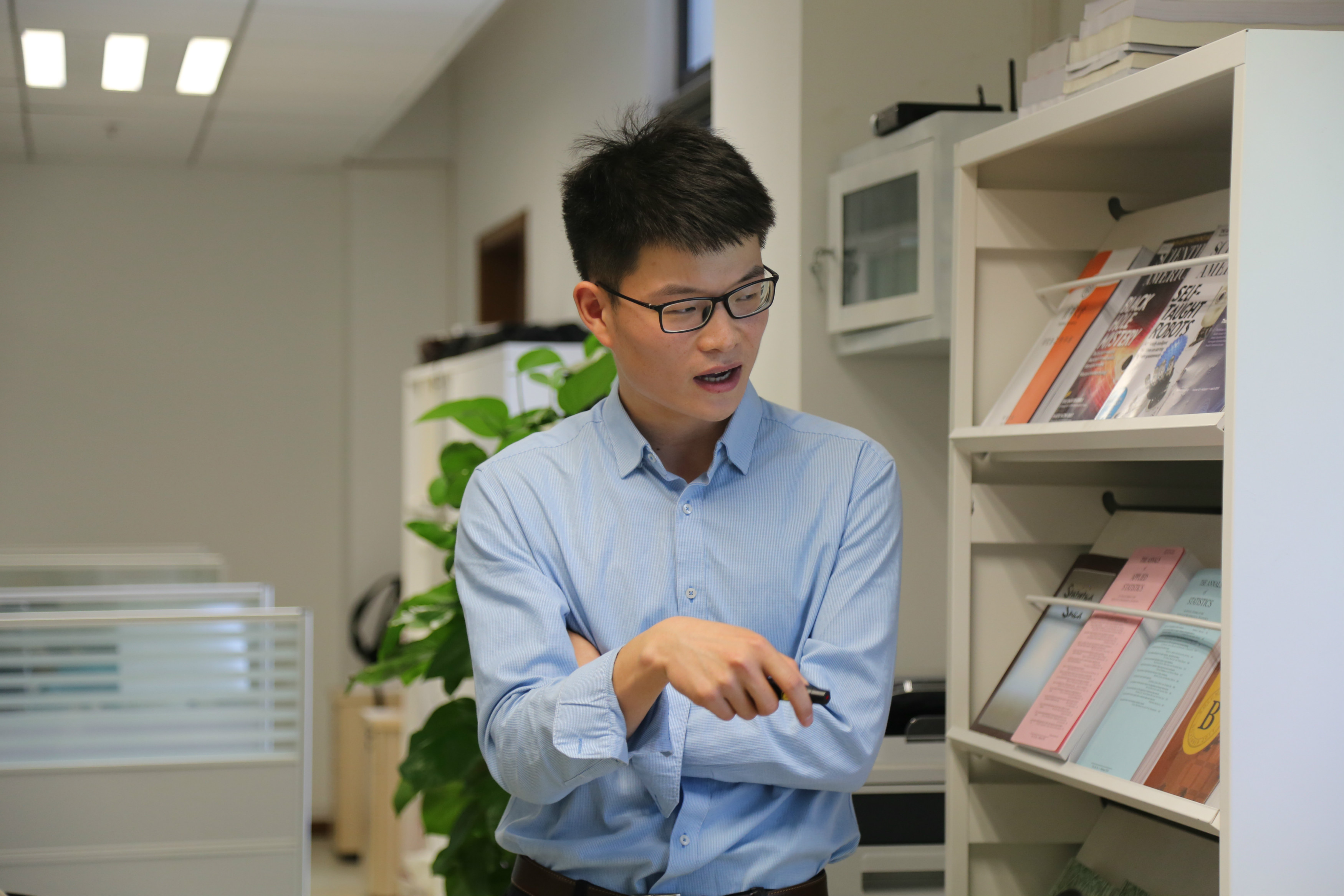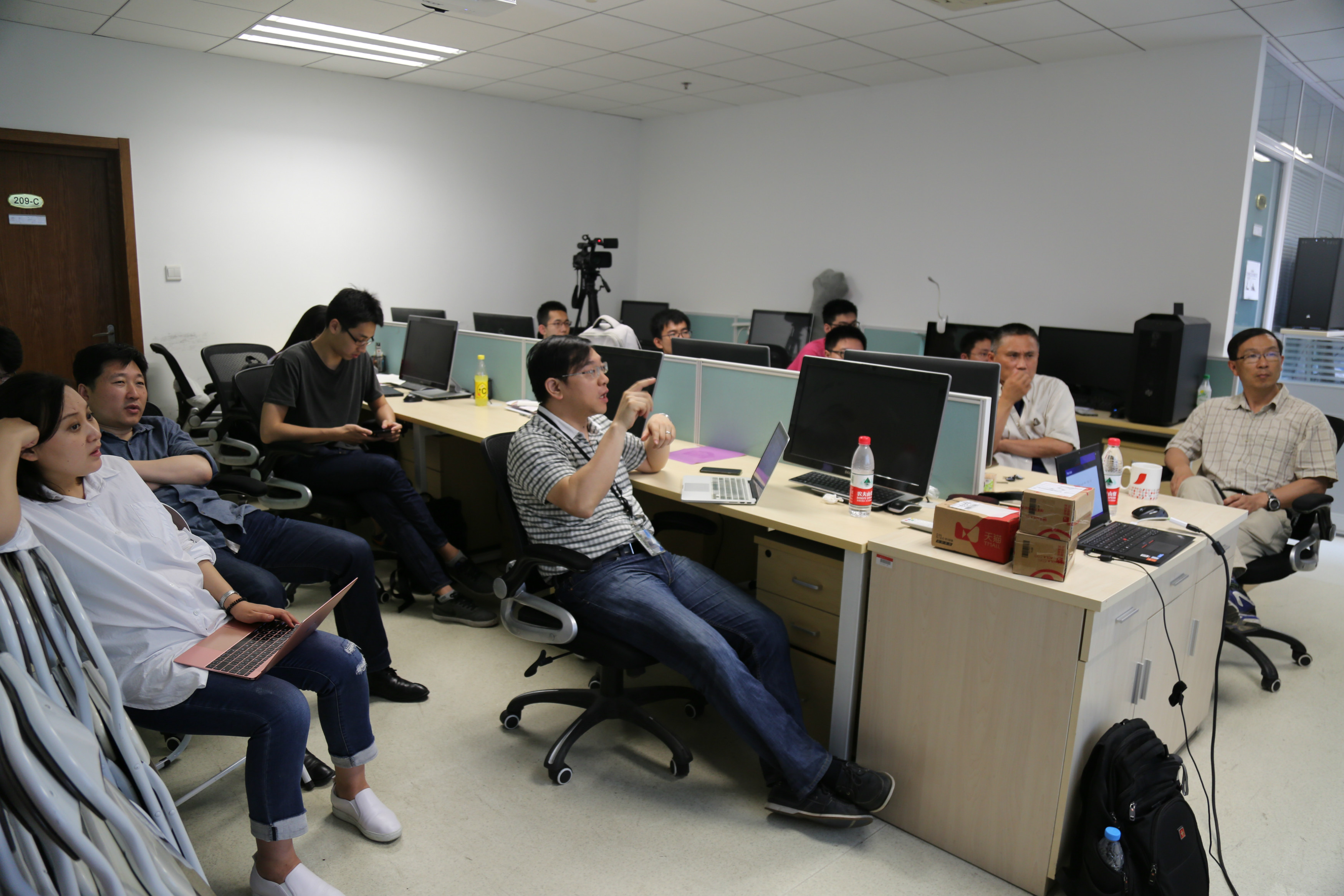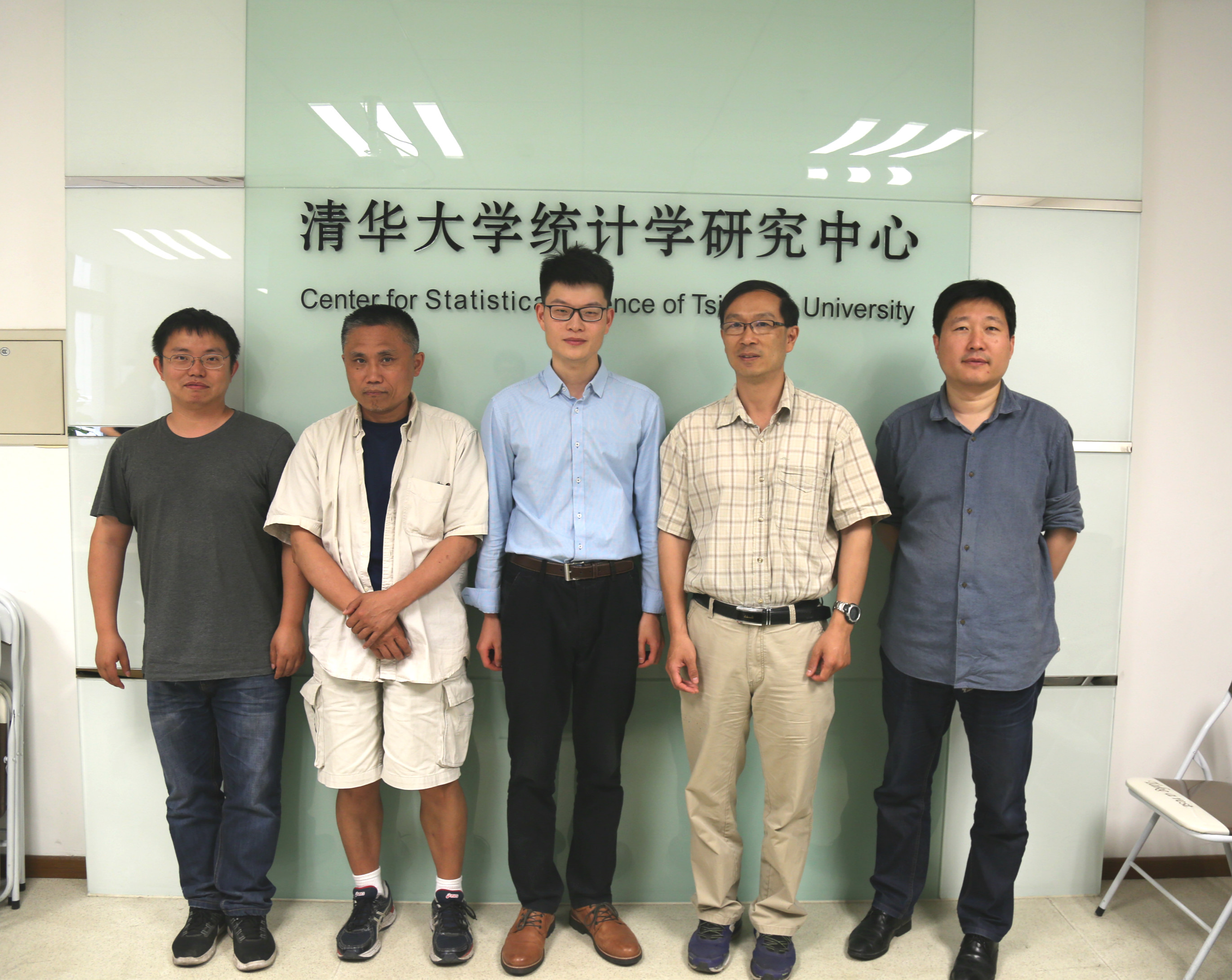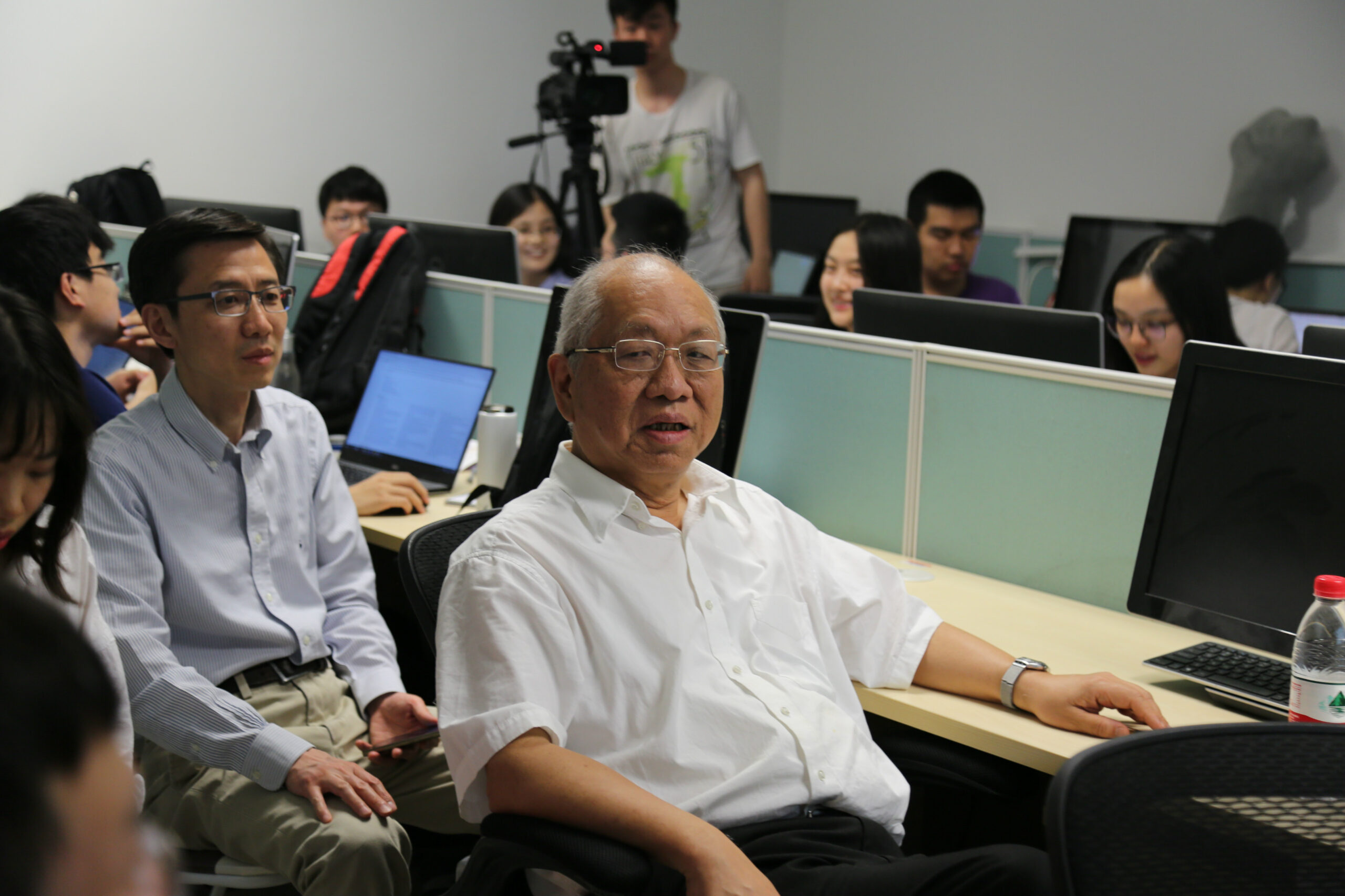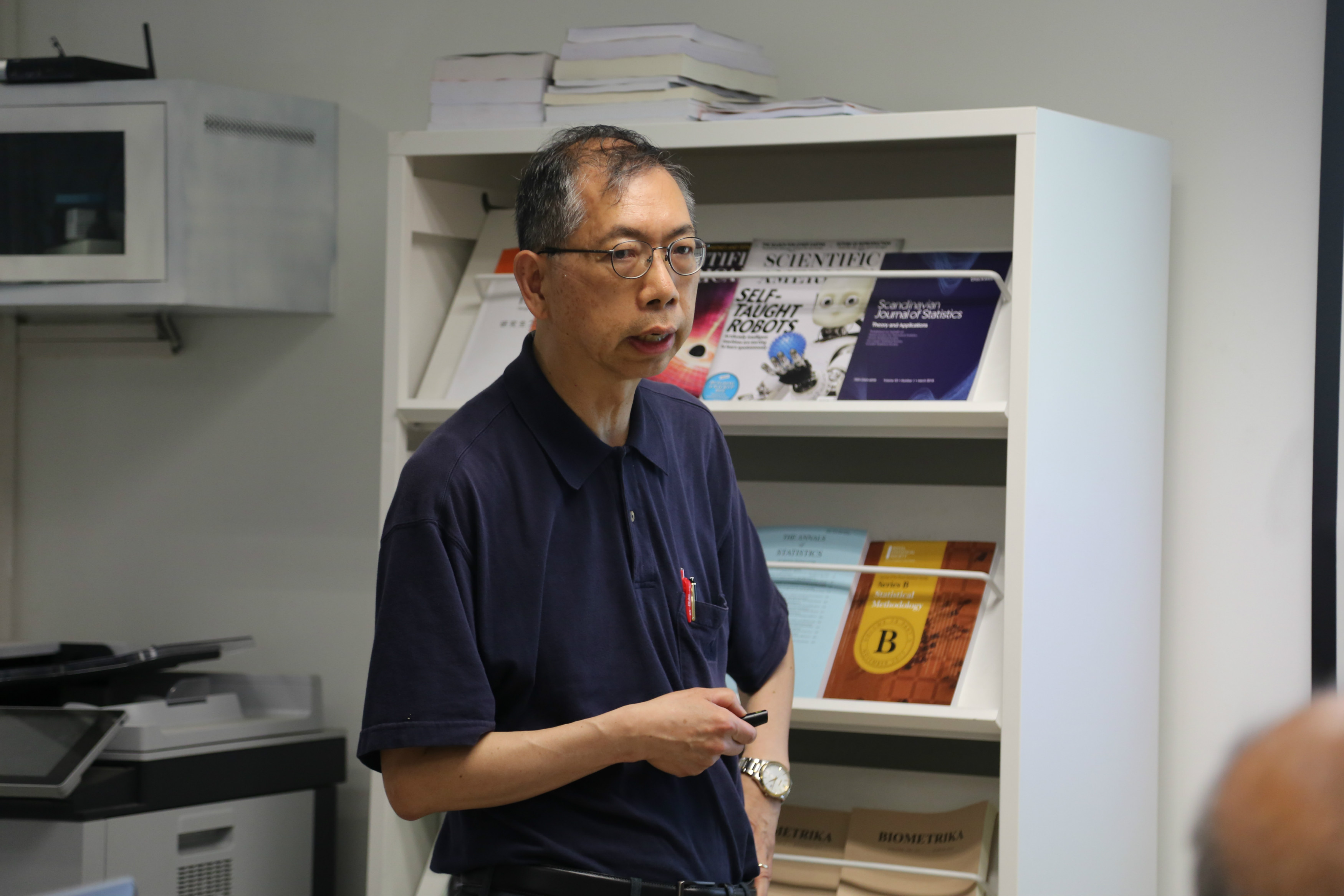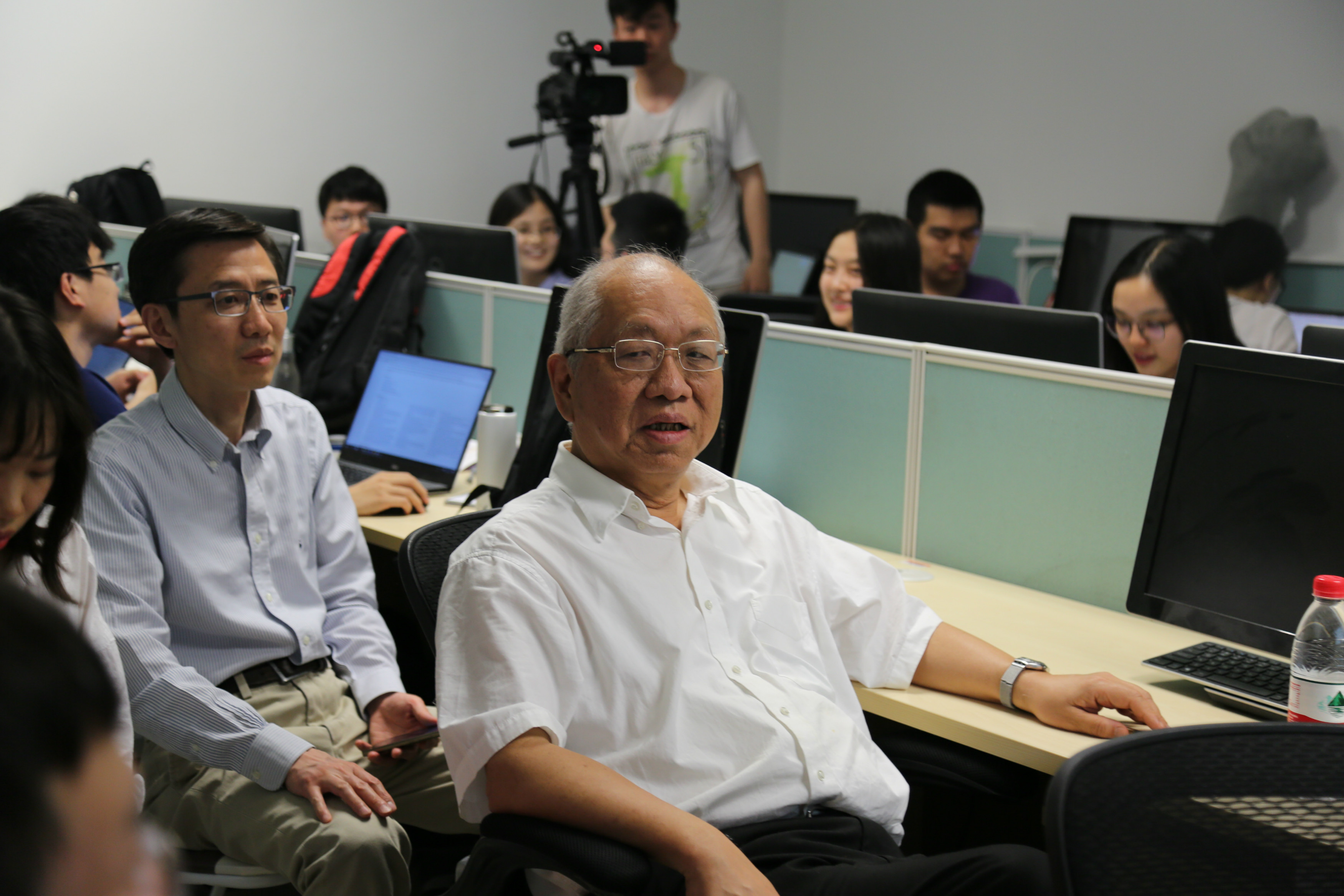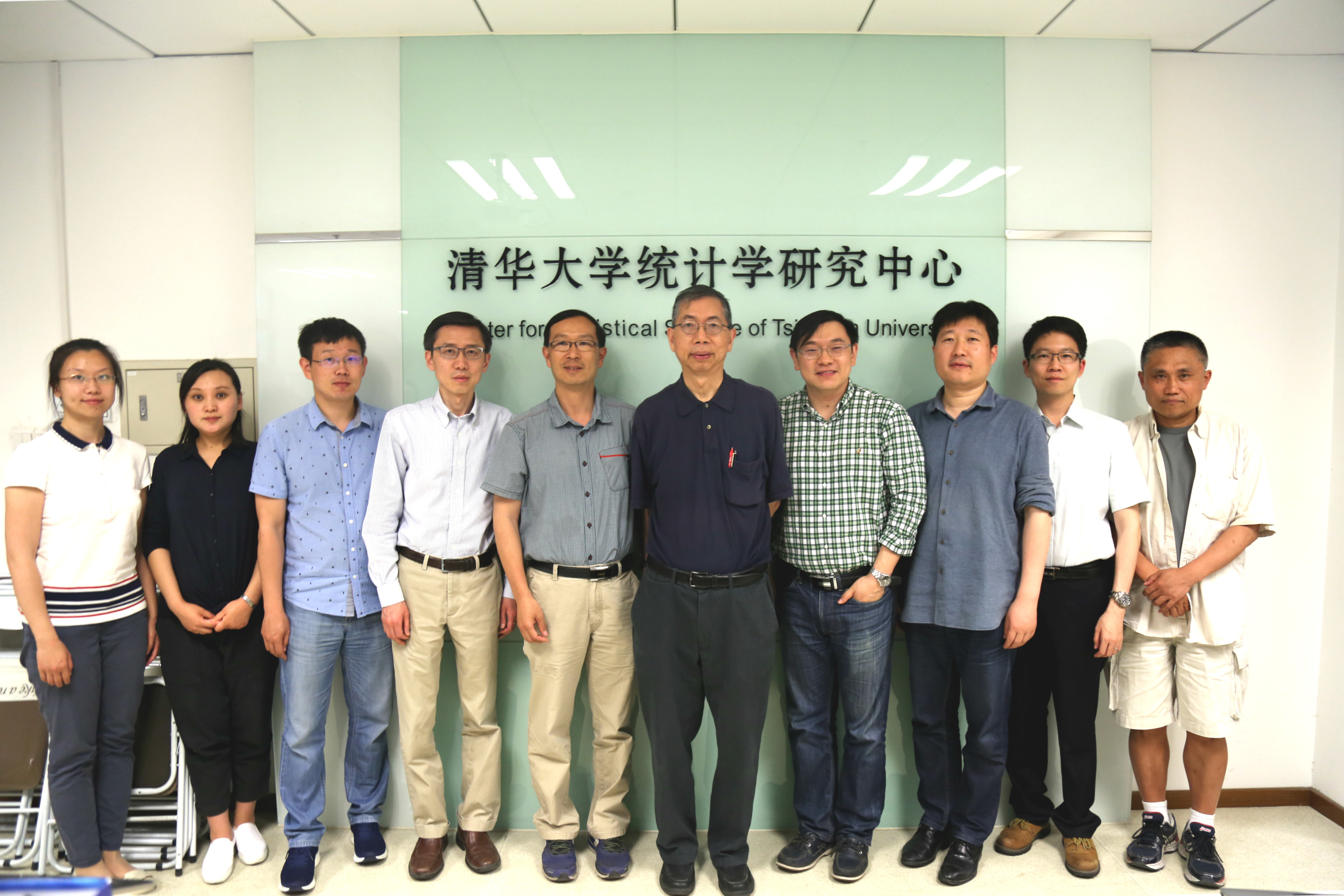
| KEY DATES |
| May 20th, 2018 11:00 AM |
Registration open |
| August 1st, 2018 10:00 AM |
Payment open |
| September 1st, 2018 05:00 PM |
Early registration deadline |
| September 30th, 2018 05:00 PM |
Registration & Cancellation deadline |
With the rapid development of modern computing technology and the rise of the big data, opportunities and challenges in statistical computing have been witnessed in all dimensions of data science. Confronted to such condition, the Asian Regional Section of the International Association for Statistical Computing (IASC-ARS) and Chinese Association for Statistical Computing (IASC) jointly hold the IASC-ARS 25th Anniversary Conference & CASC 2nd Annual Conference in Beijing, China. The conference is dedicated to promoting further development of statistical computing in modern data science, and to providing a platform for international academic exchanges and cooperation among Statistical Computing and data science professionals.
Time:November 9 – 11, 2018
Venue: Beijing Conference Center, Beijing,China
(No. 88 Laiguangying West Road, Chaoyang District, Beijing)
Ⅱ. Organizers
The Asian Regional Section of the International Association for Statistical Computing (IASC-ARS)
The Asian Regional Section (ARS) of the International Association for Statistical Computing (IASC) is established by the Council in accordance with art. 12 of the IASC Statutes in 1993 by the name of the East Asian Regional Section (EARS) and the name is changed to the Asian Regional Section in 1998. It is composed of the members of the IASC residing in Asia. Our mission: to organize international or regional seminars, conferences, meetings. In particular, the ARS shall be responsible for arranging Asian meetings on computational statistics, which are abbreviated to IascAsian meetings hereafter; to promote research and training programs on theoretical and practical aspects of computational statistics; to foster evaluations of statistical computing techniques and programs; to publish scientific periodicals and books, reports and newsletters, independently or in cooperation with other organizations; to collaborate with other bodies having similar objectives.
Chinese Association for Statistical Computing (CASC)
The recent advancement of statistical research and increasing requirements arisen from the big data in various application fields have provided unprecedented challenges and opportunities in statistical computing. In order to respond to the pressing needs and seize the historical opportunity, a group of young statisticians, led by Professor Ke Deng of Center for Statistical Science at Tsinghua University, have jointly initiated the Chinese Association for Statistical Computing, as a branch of Chinese Association for Applied Statistics. The CASC was launched on March 19, 2017. The secretariat of CASC is located in the Center for Statistical Science at Tsinghua University.
CASC aims to unite the professionals in both academy and industry to enhance research and applications of statistical computing, towards boosting new theories and methodologies, promoting the applications in health, economics, industry, and other related fields, and advancing the development of statistics in China and overseas.
Co-organizer: Center for Statistical Science of Tsinghua University (TCSS)
On May 16, 2014, the Center for Statistical Sciences of Tsinghua University (TCSS) was officially launched by the university council. The Center will foster and coordinate the development of statistical science in Tsinghua University. The goal is to build a powerful faculty team, to develop cutting-edge research, to strengthen collaborations between disciplines, and, in short, to establish a world-class center of excellence in statistics at Tsinghua University. The Center is an independent academic unit at the school level, while for administrative affairs it is affiliated to the Department of Industrial Engineering.
The Center is dedicated to promoting research and teaching of statistics in Tsinghua. Research areas include mathematical statistics, computational statistics, biostatistics, with emphasis on interdisciplinary studies, especially between statistics and life sciences, medicine, engineering, and business. With their recognized research excellence, engineering, business, and life sciences at Tsinghua University are well placed to benefit from as well as provide nourishment to statistical science. By integrating research resources across campus, The Center has set its goal on high impact academic achievements in both theoretical and applied statistics.
Ⅲ. Keynote Speakers
Coming soon…
Ⅳ. Program
Coming soon…
Ⅴ. Registration
1. Registration Date
Early Registration: Before September 1, 2018
Regular Registration: September 1-30, 2018
Registration deadline: September 30, 2018
2. Registration Fee
|
Early Registration |
Regular Registration |
| Regular |
960 RMB |
1200 RMB |
| Student |
600 RMB |
750 RMB |
Note: Luncheons and a banquet will be covered by the sponsor during the conference. All participants are responsible to their own accommodation and transportation.
Accommodation Fee
|
Standard Room at Building 6# |
Standard Room at Building 9# |
| Price |
550 RMB |
650 RMB |
Your room contains a piece of breakfast. The accommodation fee will be charged when you check in.
3 Registration Procedure
Step 1: Please fill the registration information.
Step 2: Please click the link to charge the registration fee.
Registration fee will be charged by August.
(1)Online registration
哦!我们不能找到您的表单。
Please send an email to qianbao@mail.tsinghua.edu.cn before Oct. 1st if your schedule is changed.
哦!我们不能找到您的表单。
(2)Payment:
E-currency payment: Master, Visa
Secretariart for Chinese Association for Statistical Computing
Address: Weiqing Building 212, Tsinghua University, Beijing 100084, China
Tel: +86 (10)-62786091
Fax:+86 (10) -62783842
Email:stats@tsinghua.edu.cn
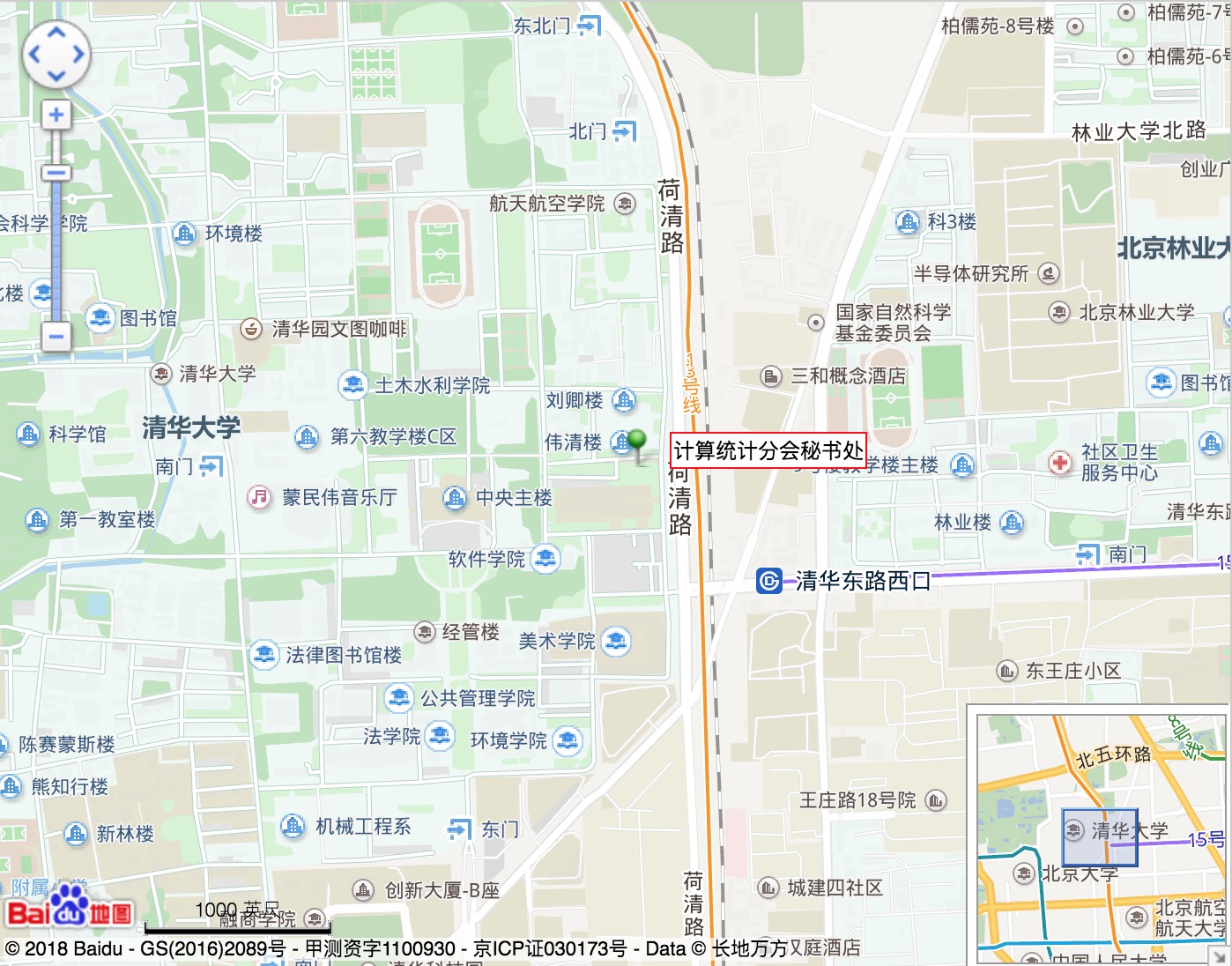
ⅥⅠ. Local Information
Venue: The Beijing Conference Center
Address: No. 88 Laiguangying West Road, Chaoyang District, Beijing
Tel: 86(10)-84901668
http://www.beijinghuiyizhongxin.com/encontact/176.html

http://www.google.cn/maps/place/Beijing+Conference+Center/@40.0105258,116.4077197,13.75z/data=!4m5!3m4!1s0x35f1aab720d5746b:0xad5ff040d3d33ade!8m2!3d40.021009!4d116.42843?hl=en
Local Transportation
Local transportation from the airport to the conference center

Hotel Information
Address: No. 88 Laiguangying West Road, Chaoyang District, Beijing
Tel: 86(10)-84901668
http://www.beijinghuiyizhongxin.com/encontact/176.html
Standard Room


Scenic Spots in Beijing
Tian’anmen (the Gate of Heavenly Peace)
Tian’anmen (the Gate of Heavenly Peace), is located in the center of Beijing. It was first built in 1417 and named Chengtianmen (the Gate of Heavenly Succession). At the end of the Ming Dynasty, it was seriously damaged by war. When it was rebuilt under the Qing in 1651, it was renamed Tian’anmen, and served as the main entrance to the Imperial City, the administrative and residential quarters for court officials and retainers. The southern sections of the Imperial City wall still stand on both sides of the Gate. The tower at the top of the gate is nine-room wide and five –room deep. According to the Book of Changes, the two numbers nine and five, when combined, symbolize the supreme status of a sovereign. During the Ming and Qing dynasties, Tian’anmen was the place where state ceremonies took place. On October 1, 1949, chairman Mao Zedong proclaimed on Tian’anmen Rostrum the founding of the People’s Republic of China. Since then Tian’anmen has been the symbol of New China.
The Great Wall of China
The Great Wall of China is a series of fortifications made of stone, brick, tamped earth, wood, and other materials, generally built along an east-to-west line across the historical northern borders of China to protect the Chinese states and empires against the raids and invasions of the various nomadic groups of the Eurasian Steppe. Several walls were being built as early as the 7th century BC; these, later joined together and made bigger and stronger, are collectively referred to as the Great Wall. Especially famous is the wall built in 220–206 BC by Qin Shi Huang, the first Emperor of China. Little of that wall remains. The Great Wall has been rebuilt, maintained, and enhanced over various dynasties; the majority of the existing wall is from the Ming Dynasty (1368–1644).
Apart from defense, other purposes of the Great Wall have included border controls, allowing the imposition of duties on goods transported along the Silk Road, regulation or encouragement of trade and the control of immigration and emigration.
The Great Wall stretches from Dandong in the east to Lop Lake in the west, along an arc that roughly delineates the southern edge of Inner Mongolia. A comprehensive archaeological survey, using advanced technologies, has concluded that the Ming walls measure 8,850 km (5,500 mi). This is made up of 6,259 km (3,889 mi) sections of actual wall, 359 km (223 mi) of trenches and 2,232 km (1,387 mi) of natural defensive barriers such as hills and rivers. Another archaeological survey found that the entire wall with all of its branches measures out to be 21,196 km (13,171 mi). Today, the Great Wall is generally recognized as one of the most impressive architectural feats in history.
The Temple of Heaven
The Temple of Heaven (Chinese: 天坛; pinyin: Tiantan) is an imperial complex of religious buildings situated in the southeastern part of central Beijing. The complex was visited by the Emperors of the Ming and Qing dynasties for annual ceremonies of prayer to Heaven for good harvest. It has been regarded as a Taoist temple, although Chinese heaven worship, especially by the reigning monarch of the day, predates Taoism.
In ancient China, the Emperor of China was regarded as the Son of Heaven, who administered earthly matters on behalf of, and representing, heavenly authority. To be seen to be showing respect to the source of his authority, in the form of sacrifices to heaven, was extremely important. The temple was built for these ceremonies, mostly comprising prayers for good harvests.
 为了促进人工智能和医学影像的互联互通,提升智能医学影像分析研究的国际影响力,同时为医学影像与人工智能两个领域的专家建立深度战略合作的平台,清华大学统计学研究中心携手广州柏视医疗科技有限公司,于2018年6月15日举办“智能医学影像分析研讨会”。会议由美国普渡大学统计系终身教授朱宇教授以及广州柏视医疗科技有限公司董事长、中山大学数据科学与计算机学院教授陆遥博士共同召集。70余位国内外医学影像和人工智能领域顶尖专家和企业代表出席了本次会议,对医学影像中应用人工智能的思想、方法和实践进行了深度交流,并探讨了行业趋势、典型案例,和技术动态。
为了促进人工智能和医学影像的互联互通,提升智能医学影像分析研究的国际影响力,同时为医学影像与人工智能两个领域的专家建立深度战略合作的平台,清华大学统计学研究中心携手广州柏视医疗科技有限公司,于2018年6月15日举办“智能医学影像分析研讨会”。会议由美国普渡大学统计系终身教授朱宇教授以及广州柏视医疗科技有限公司董事长、中山大学数据科学与计算机学院教授陆遥博士共同召集。70余位国内外医学影像和人工智能领域顶尖专家和企业代表出席了本次会议,对医学影像中应用人工智能的思想、方法和实践进行了深度交流,并探讨了行业趋势、典型案例,和技术动态。
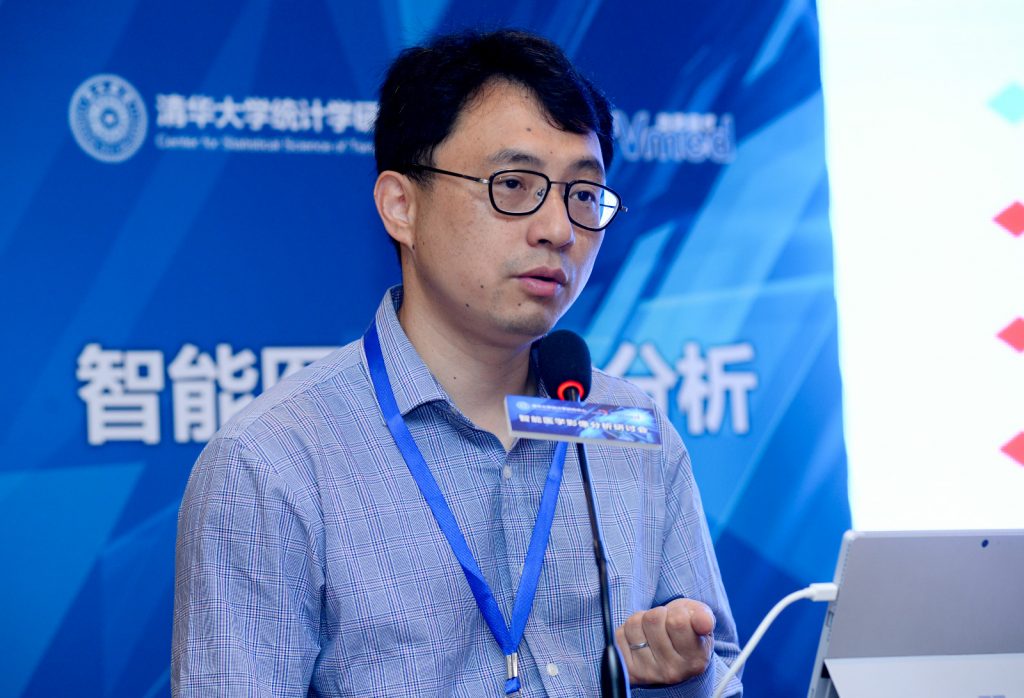
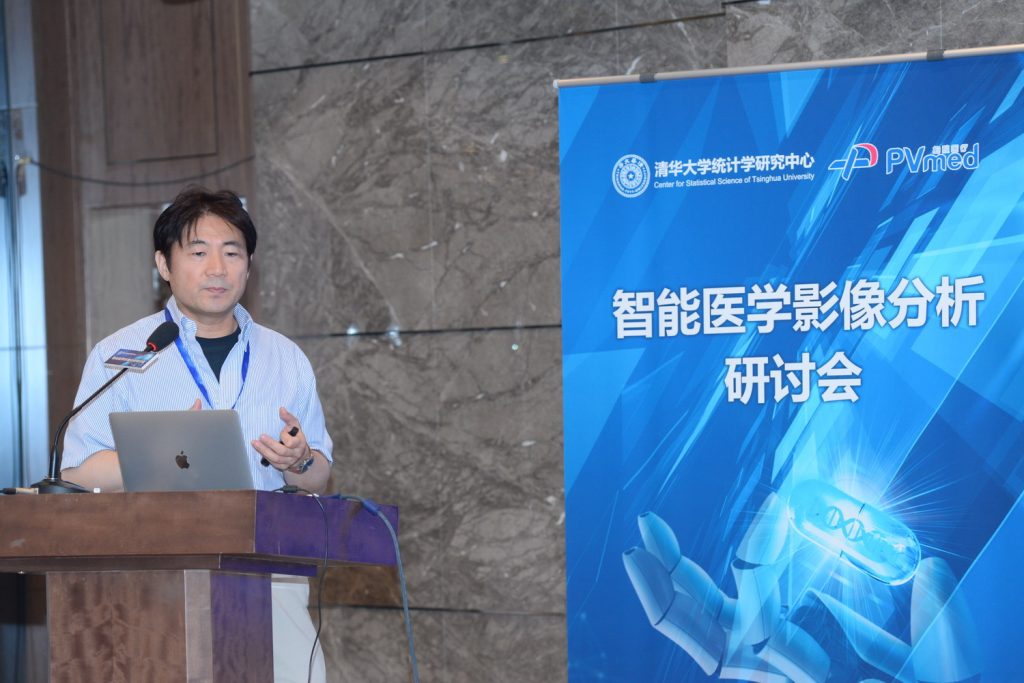
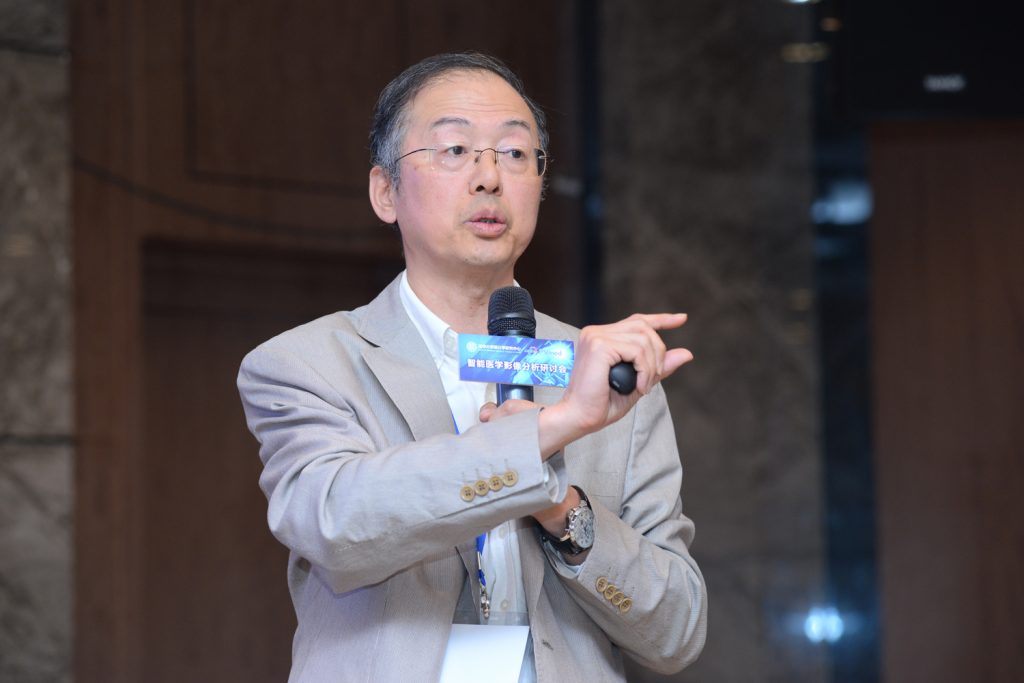
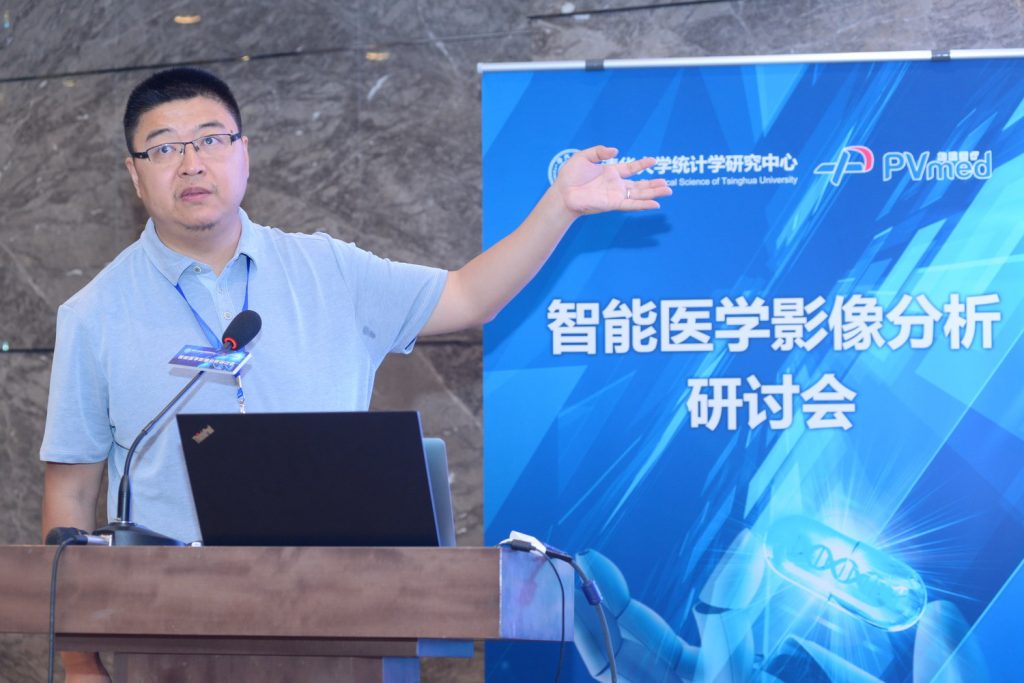
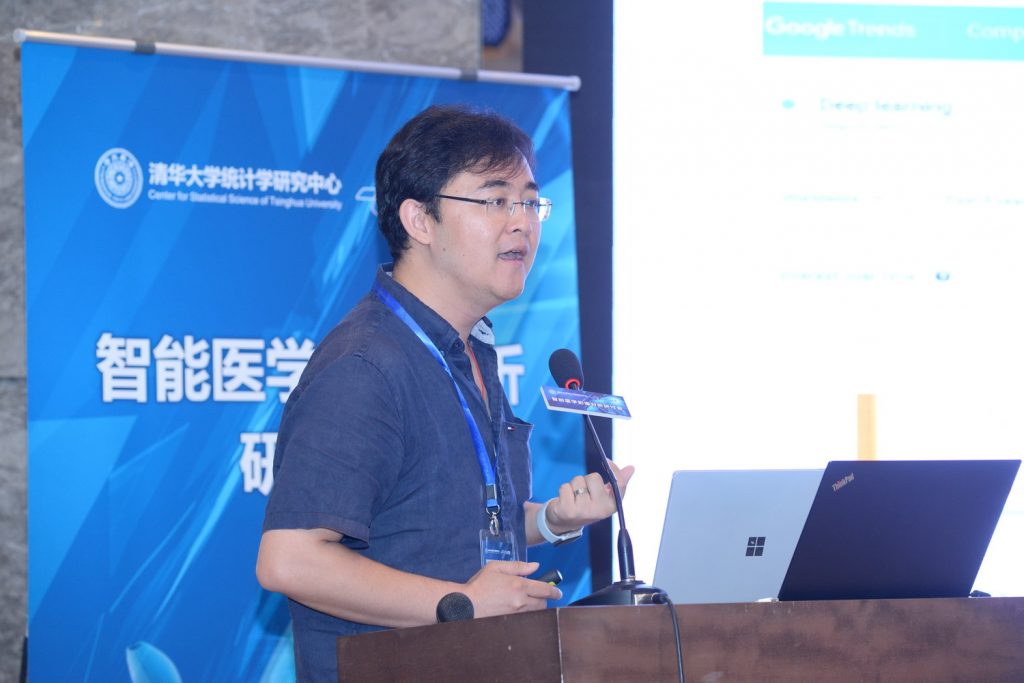
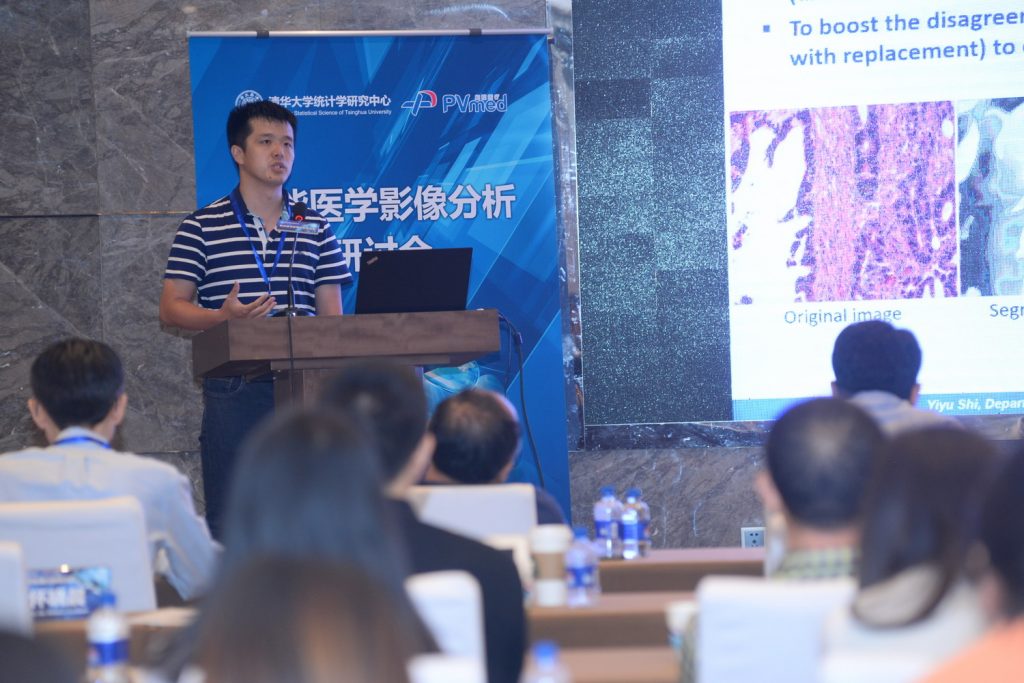

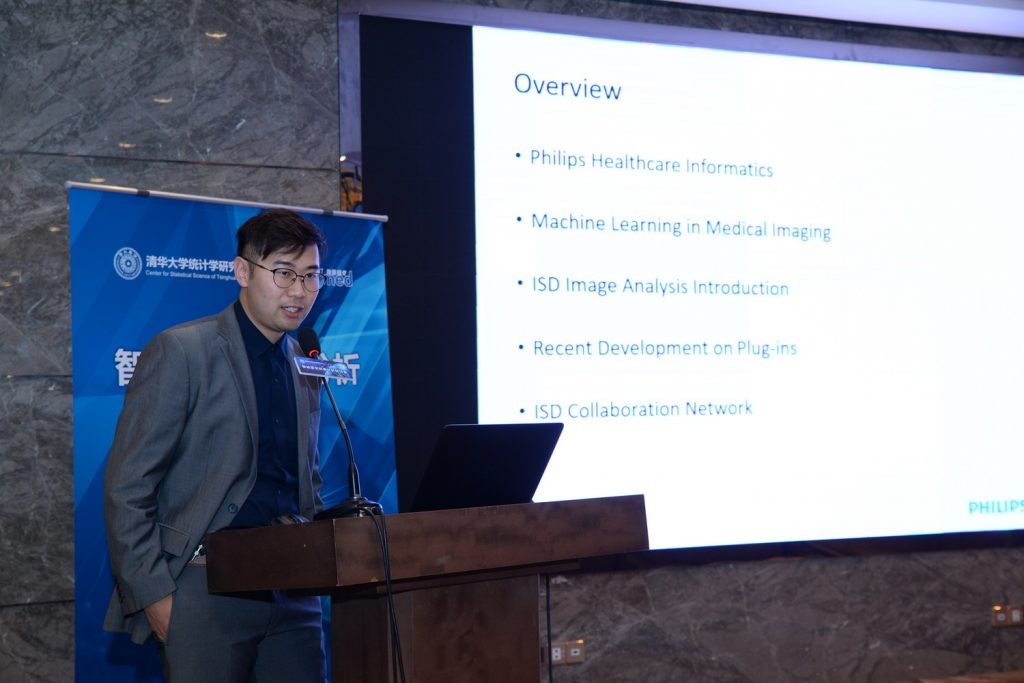
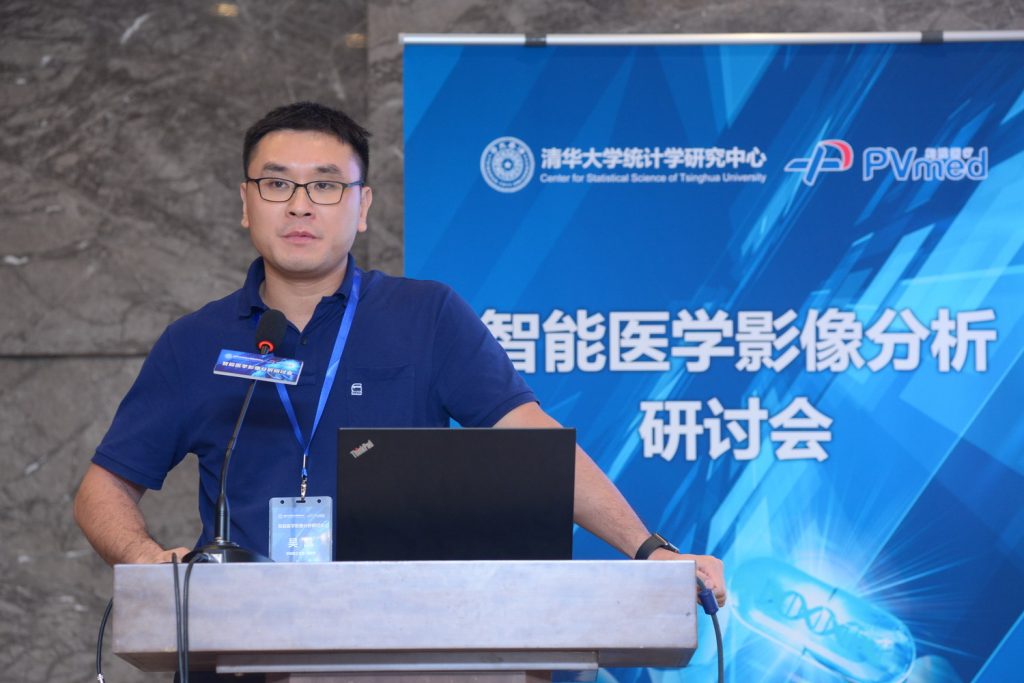 华南理工大学副教授—吴凯 特邀报告:基于多维度信息融合的精神分裂症人工智能辅助诊断系统
华南理工大学副教授—吴凯 特邀报告:基于多维度信息融合的精神分裂症人工智能辅助诊断系统
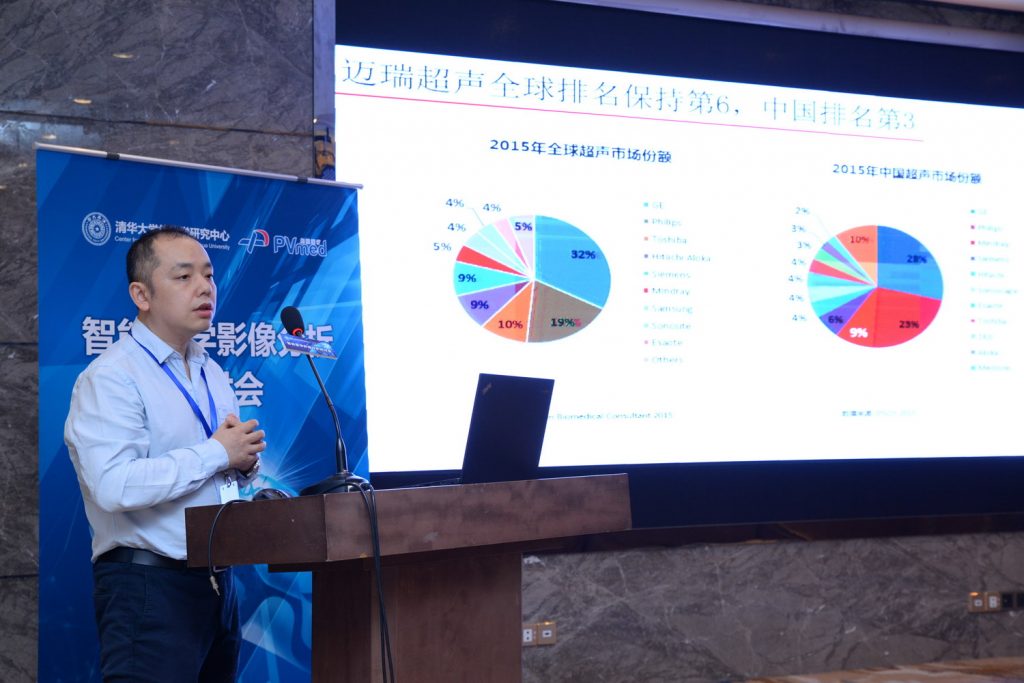
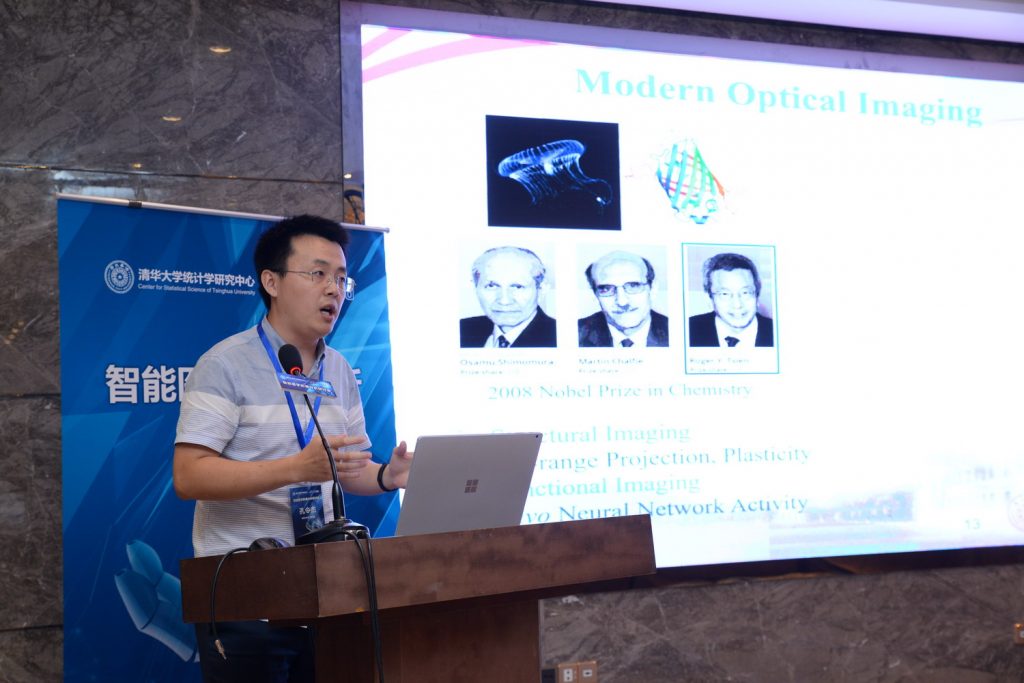
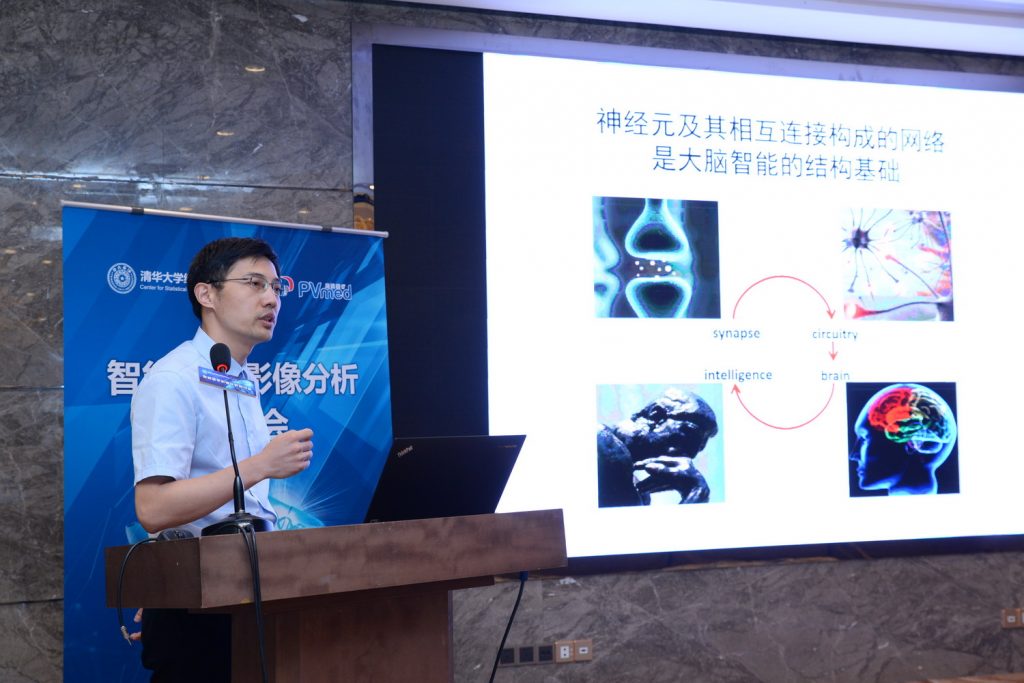
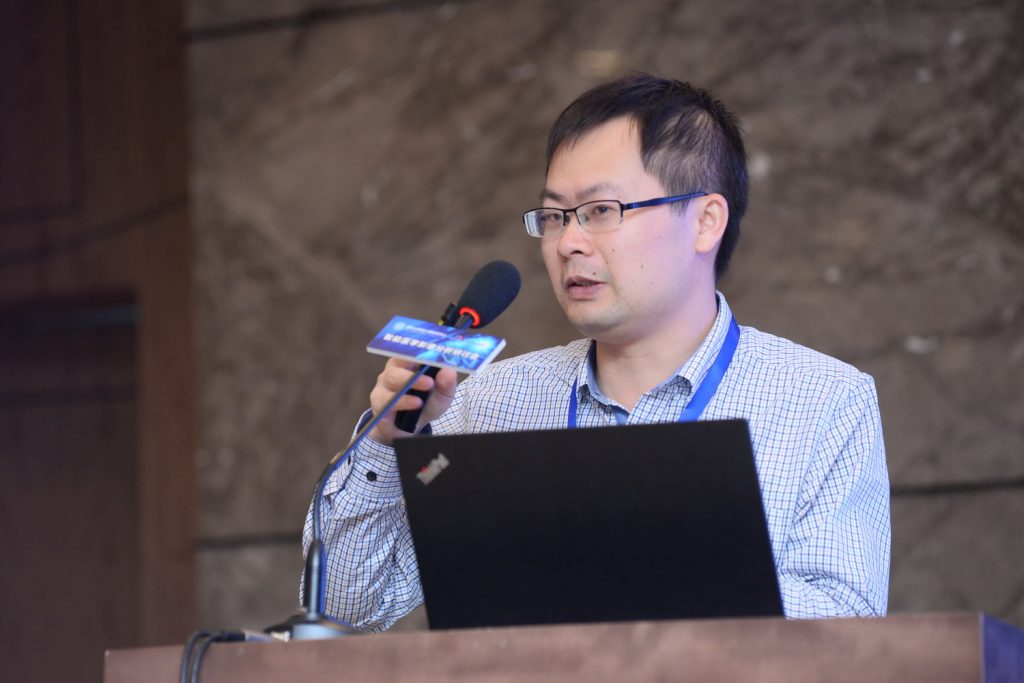
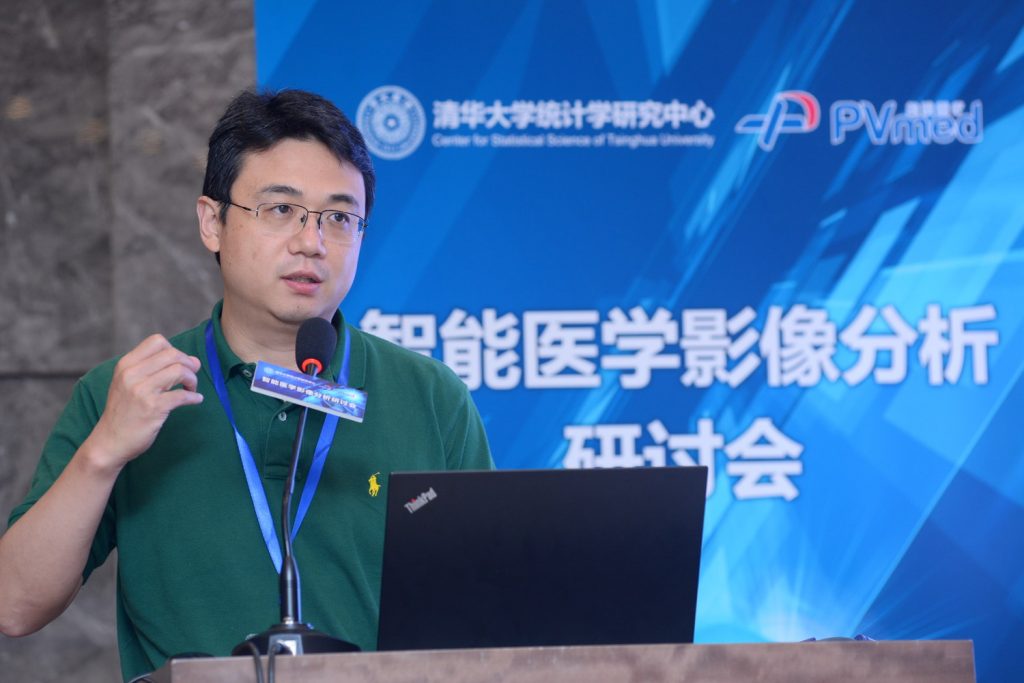
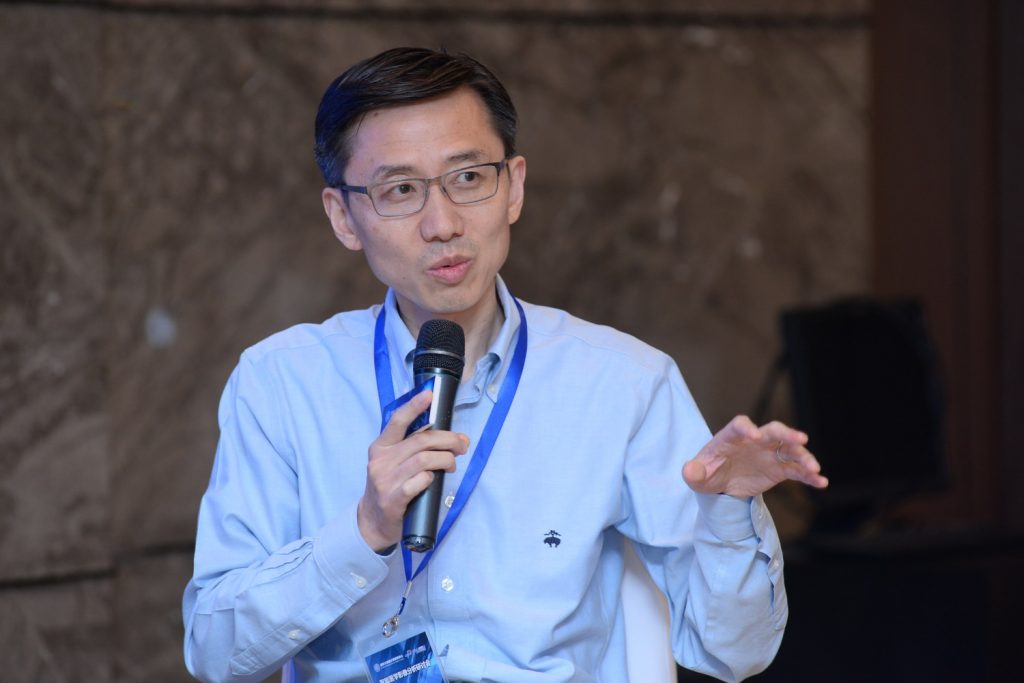
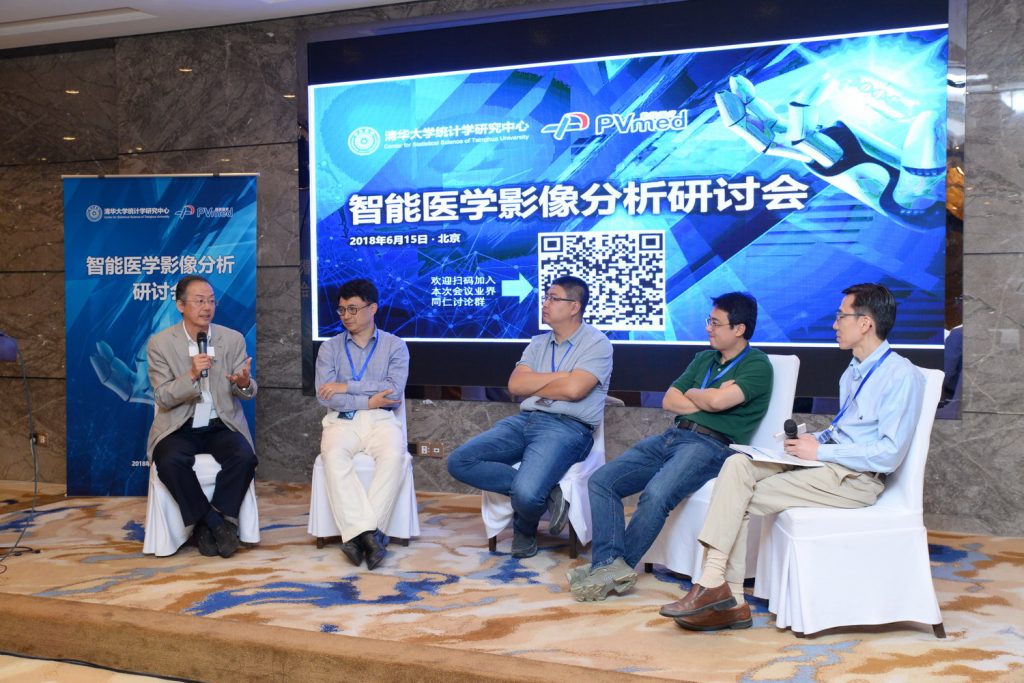
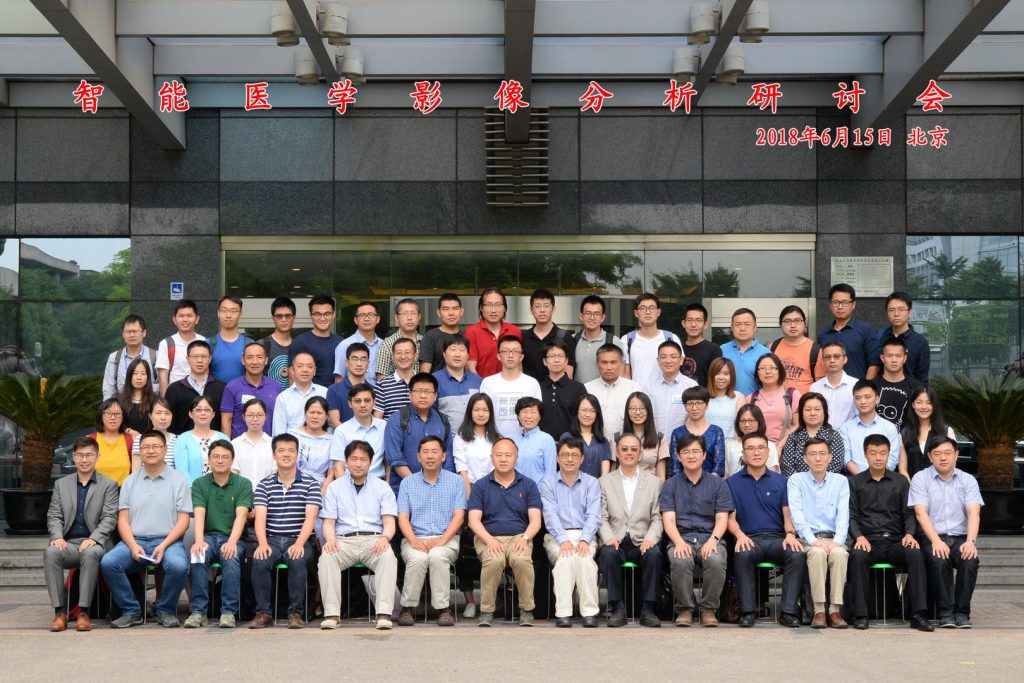

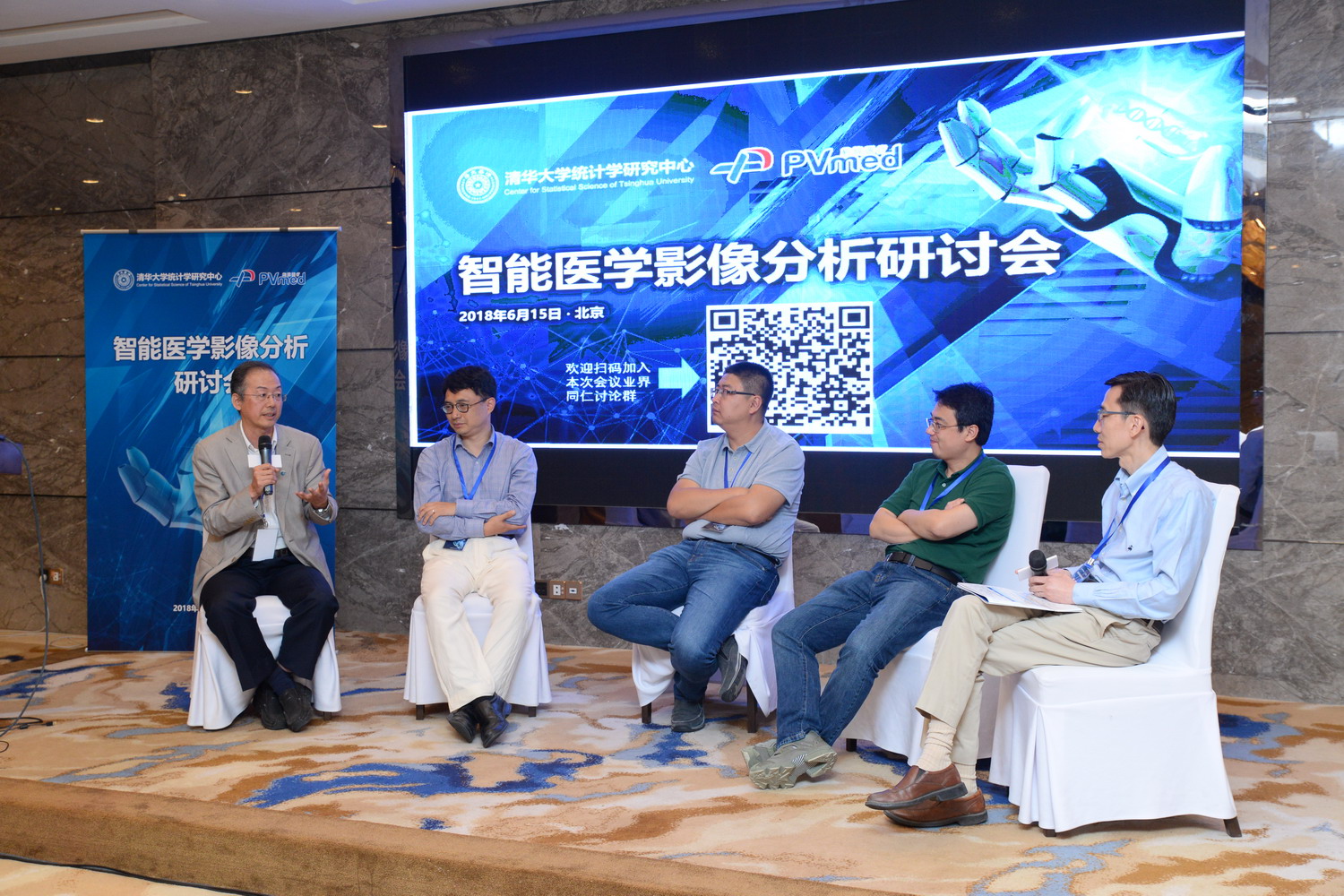
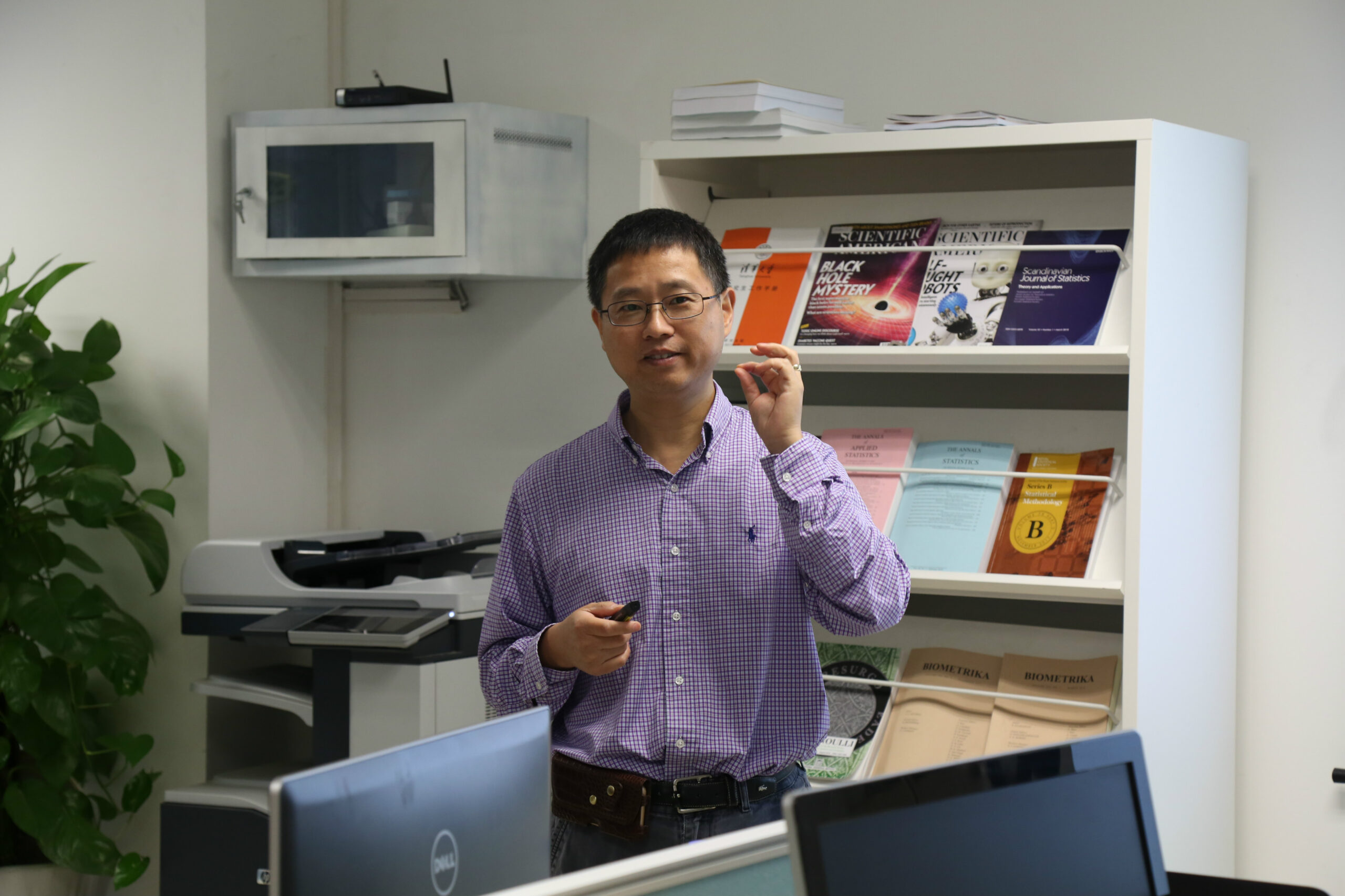
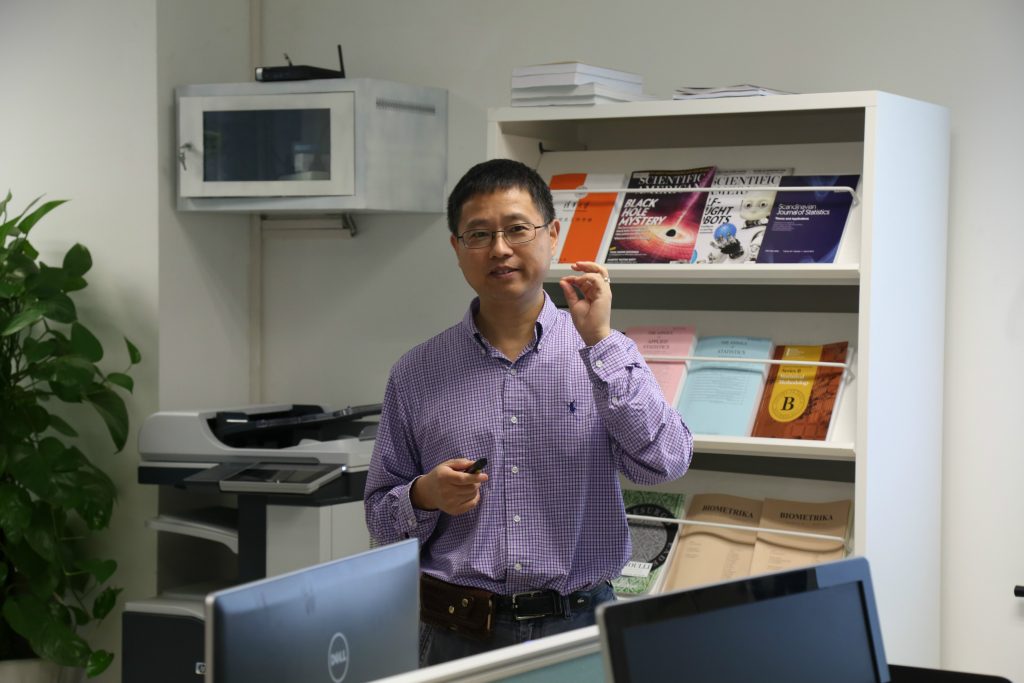
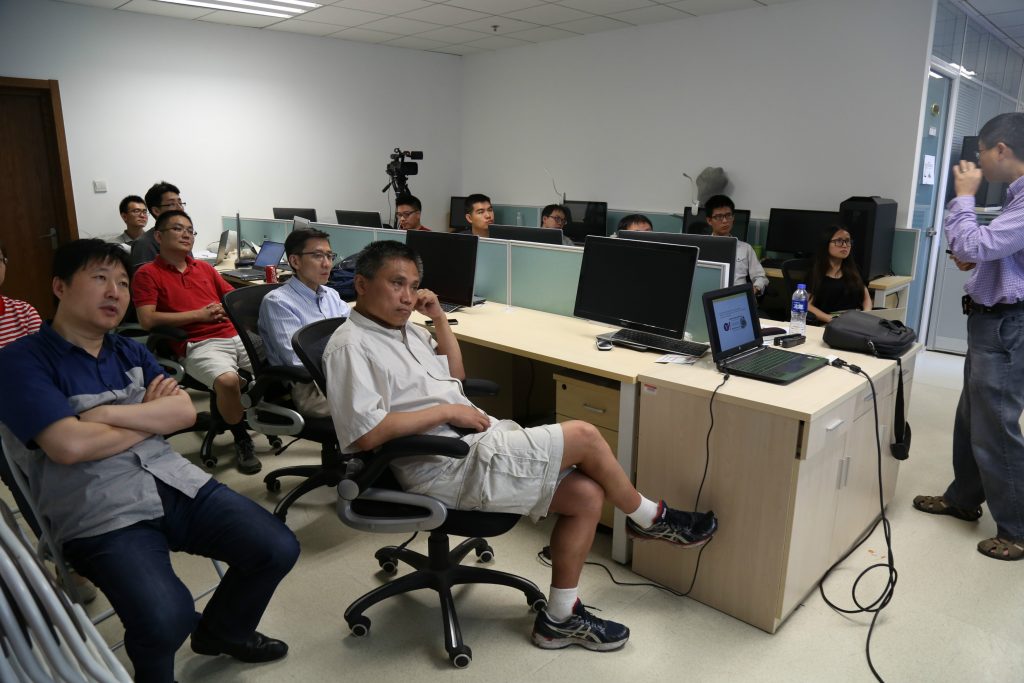
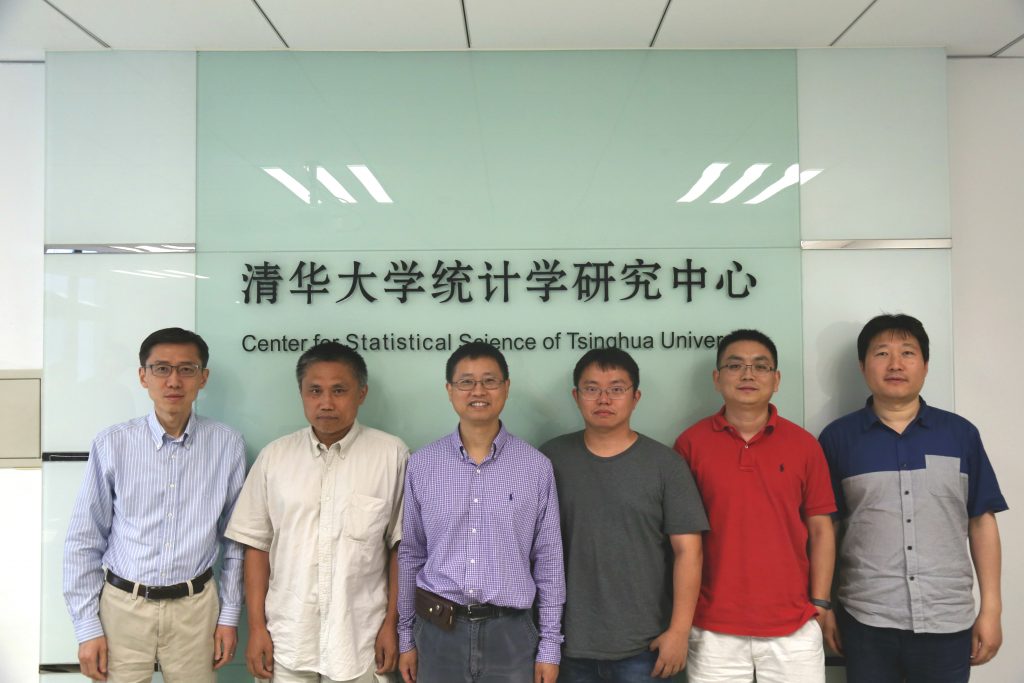
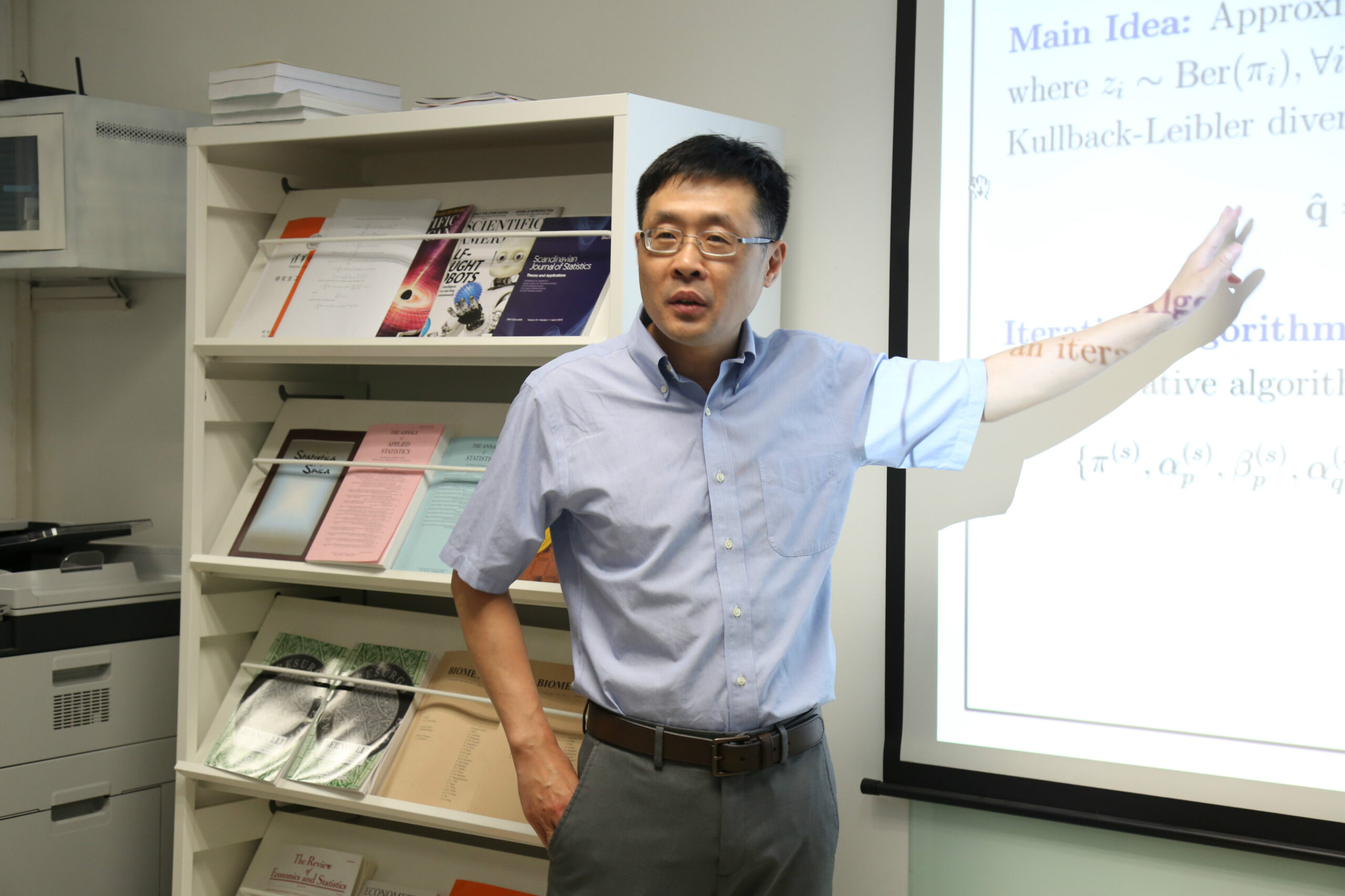
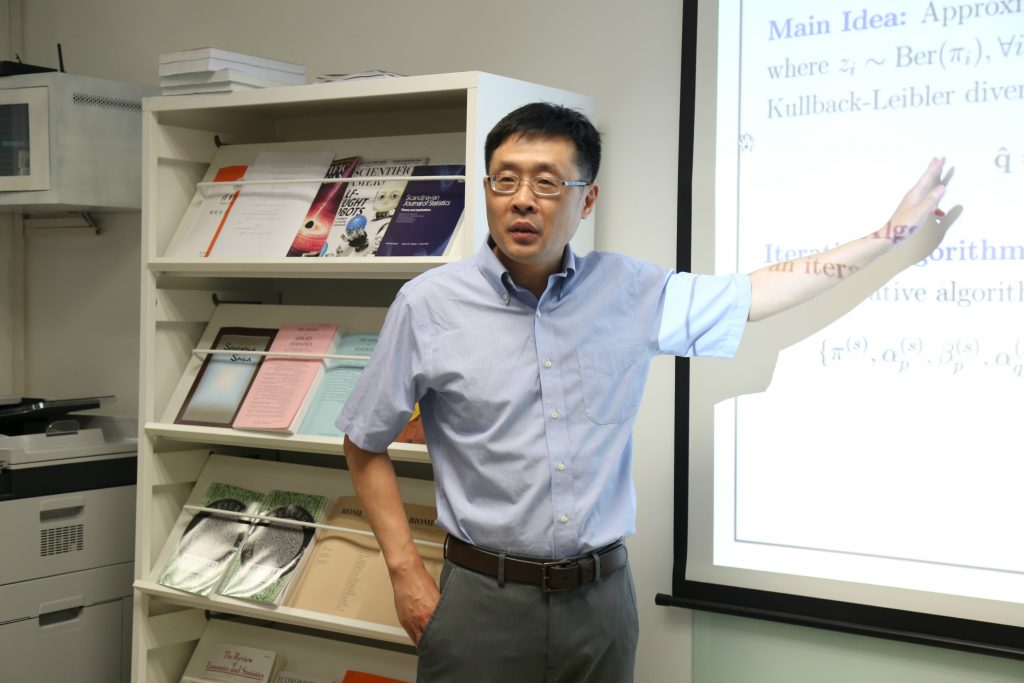



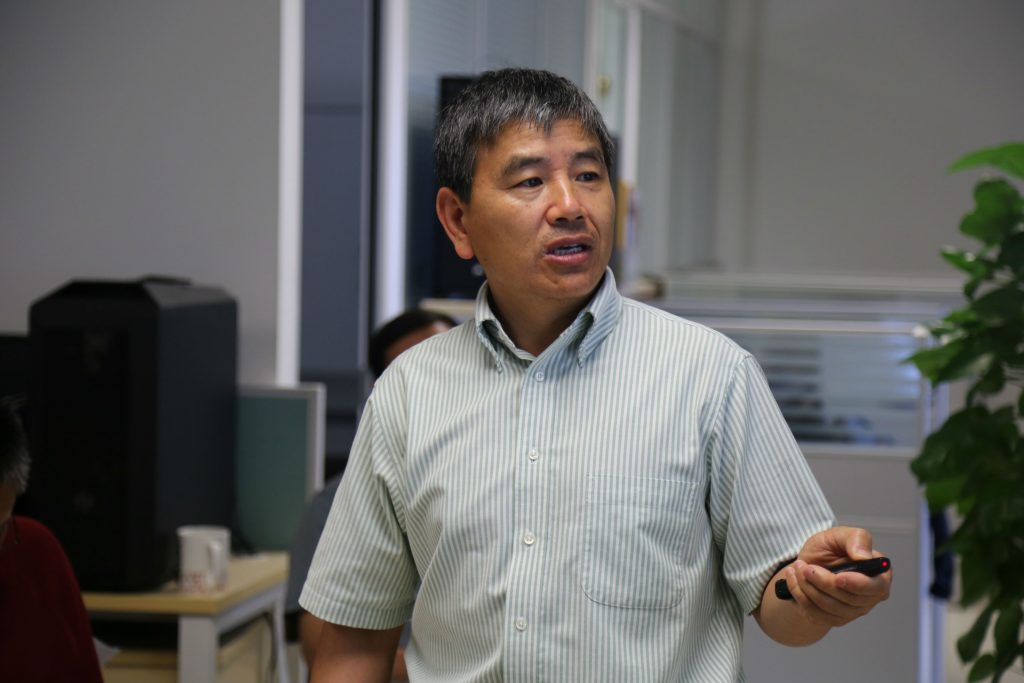

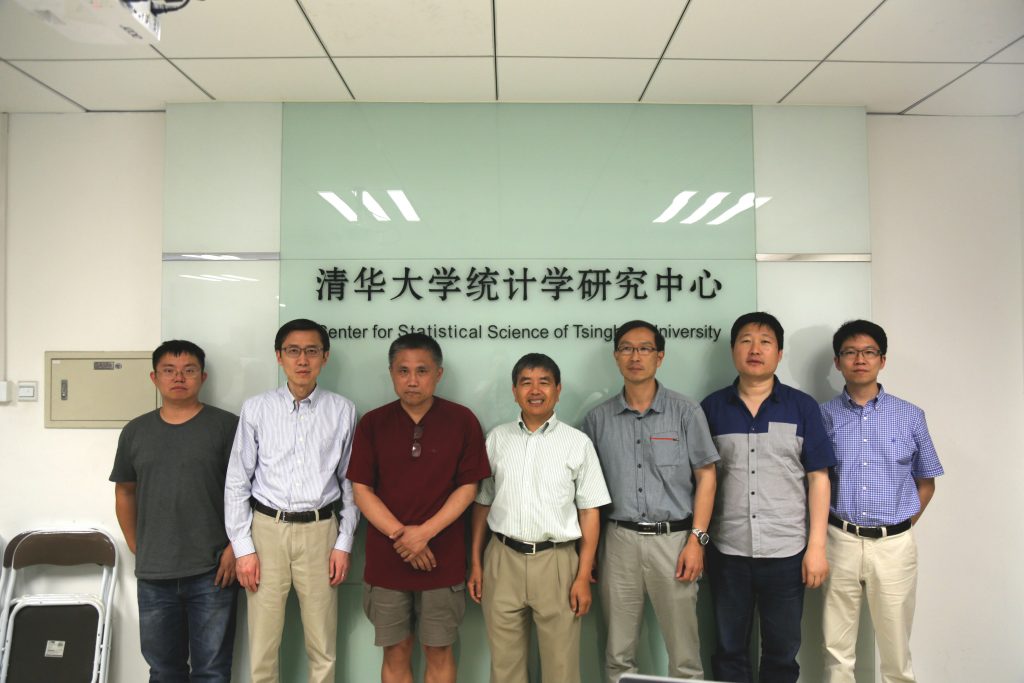
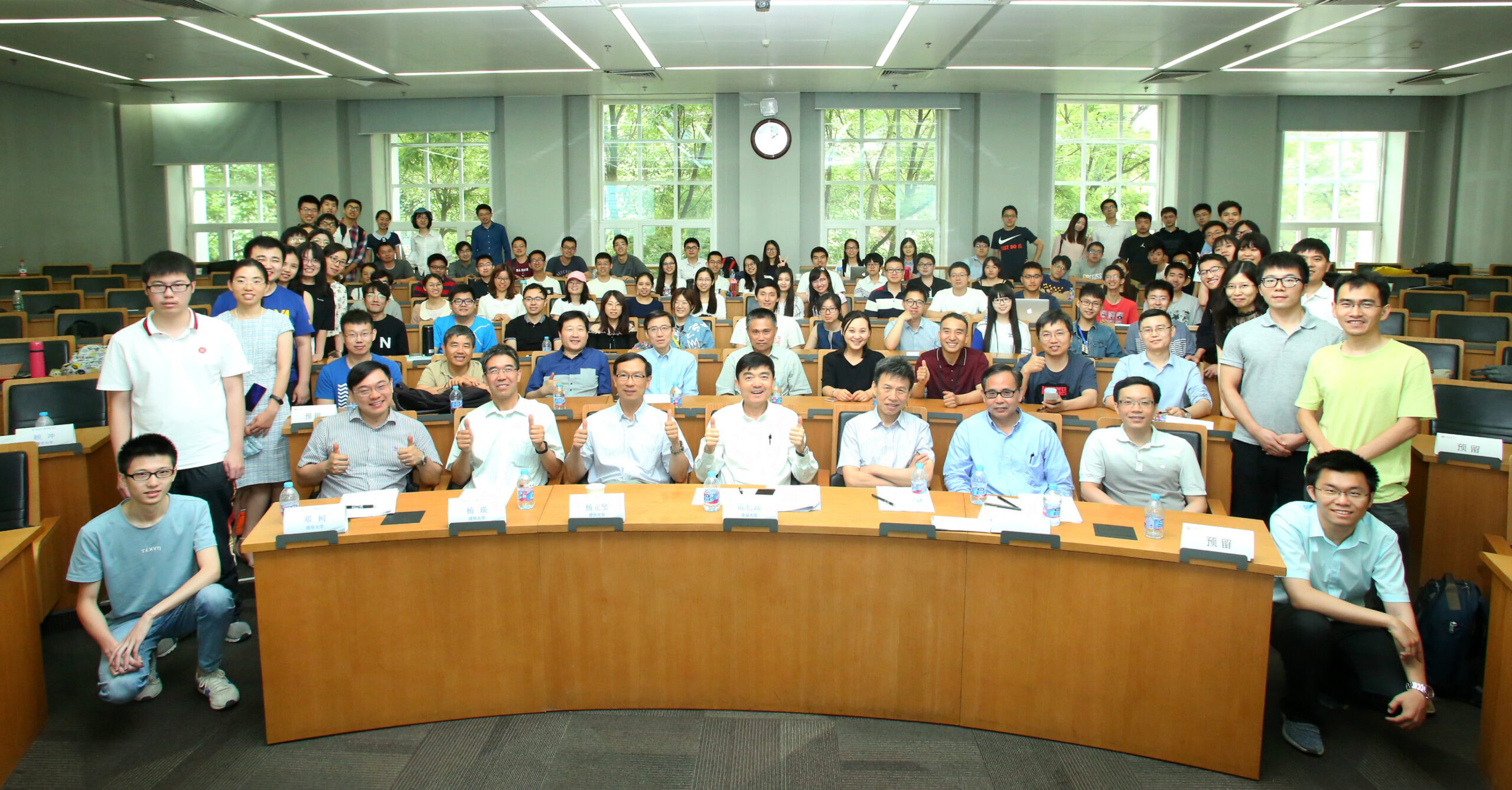
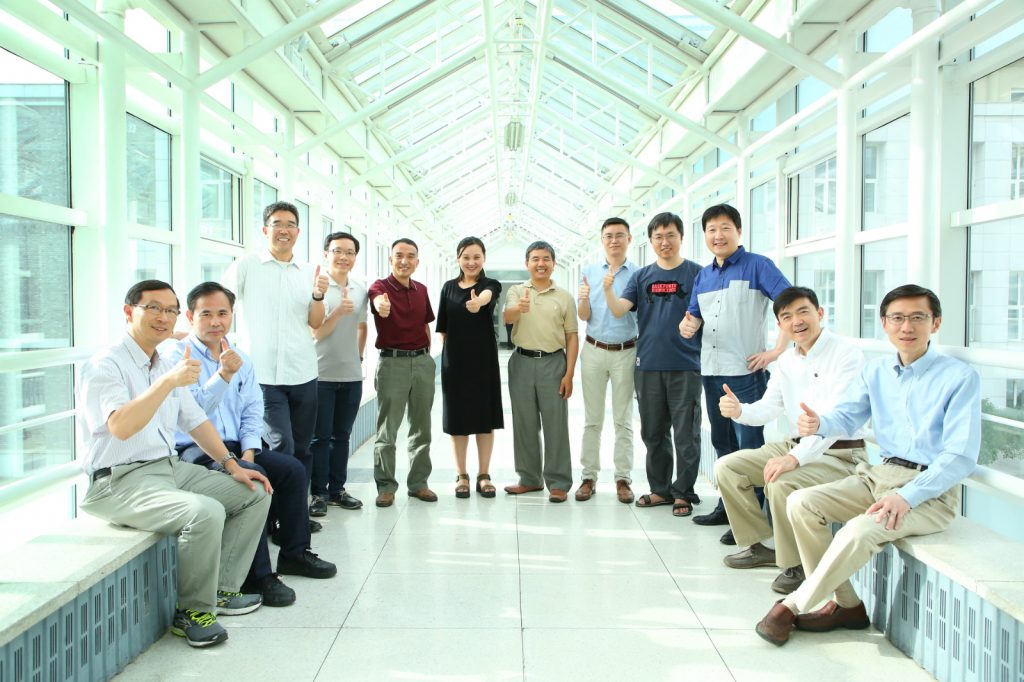
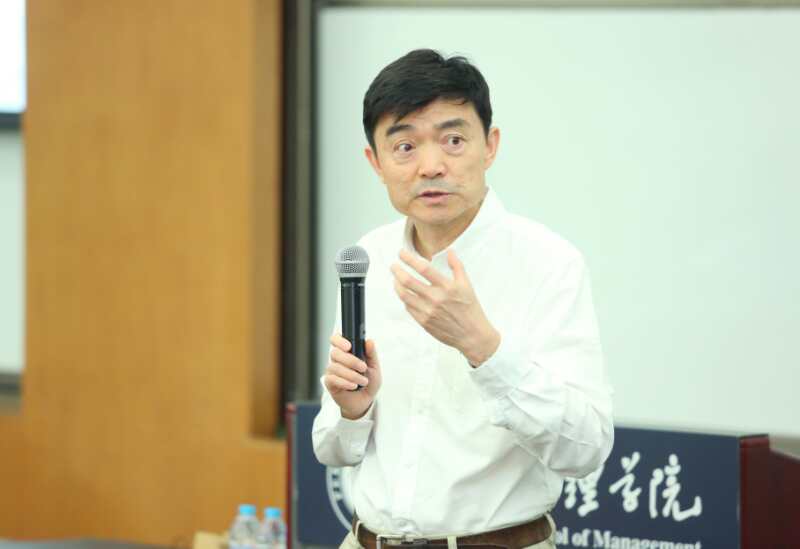
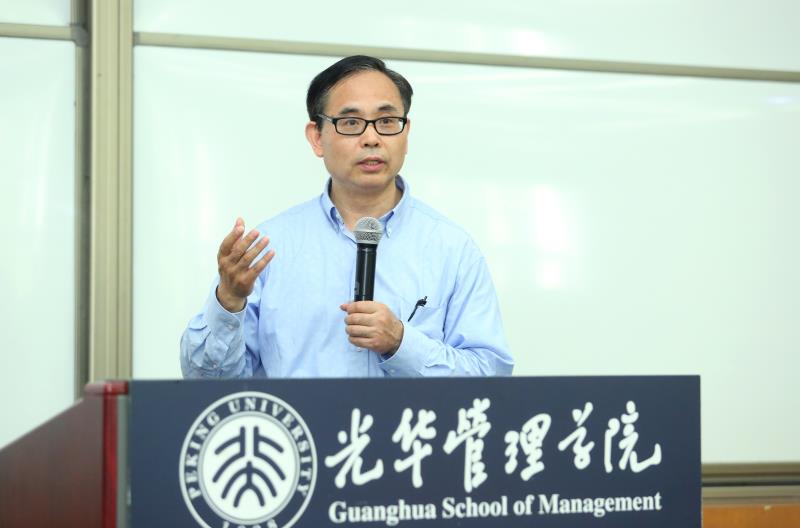
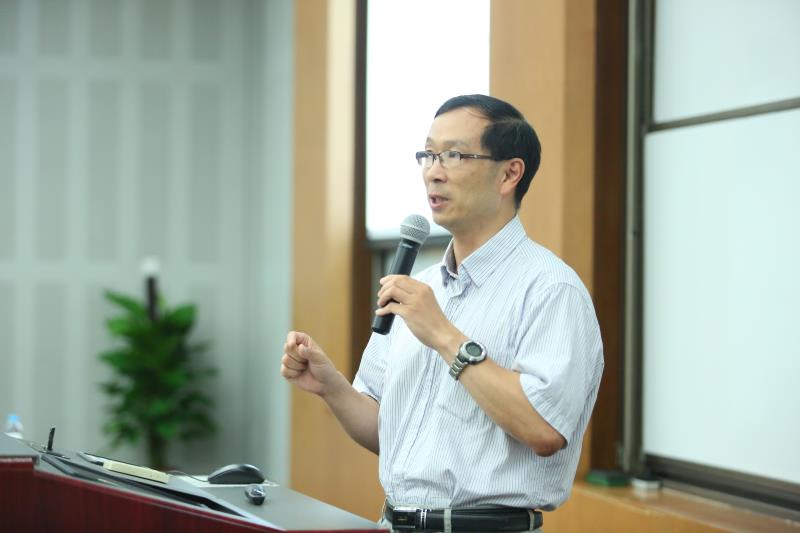
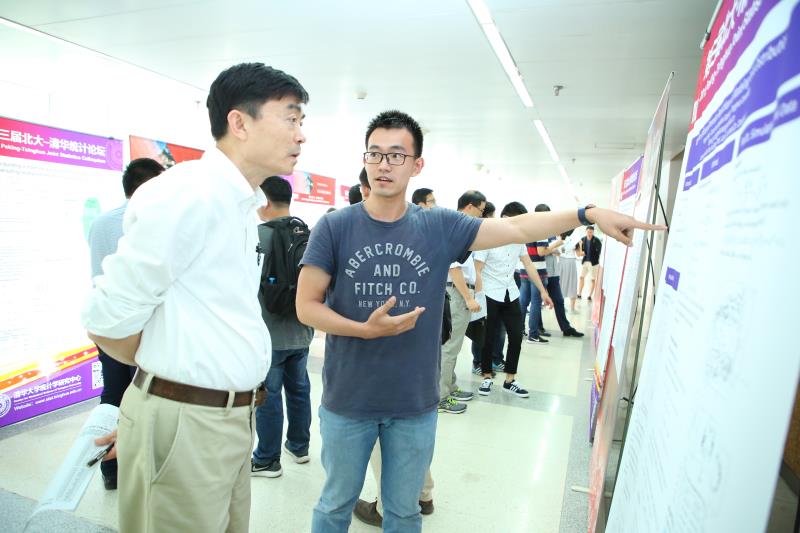
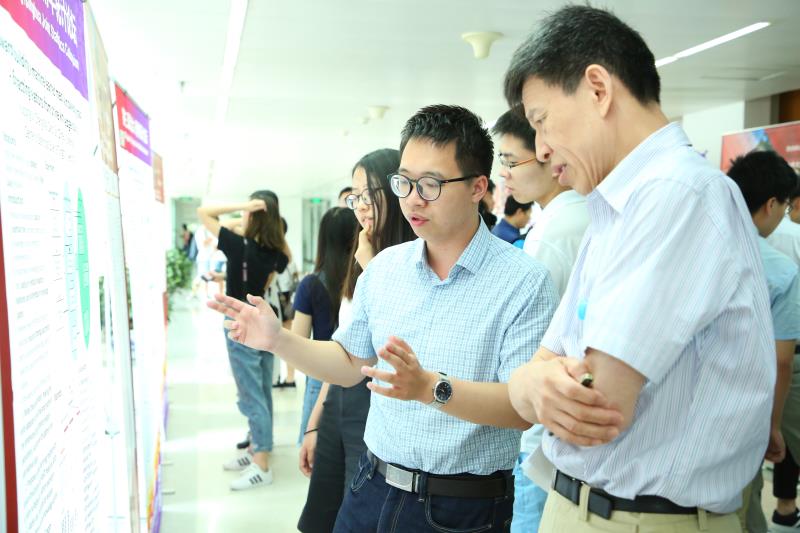

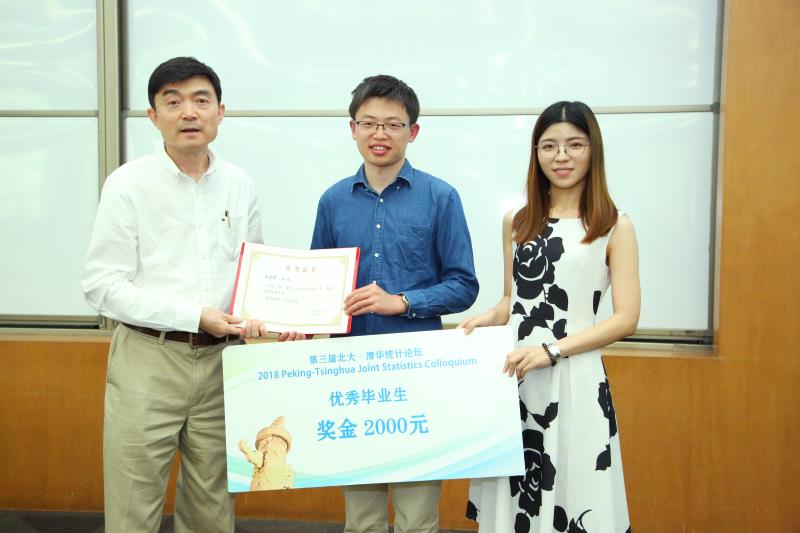
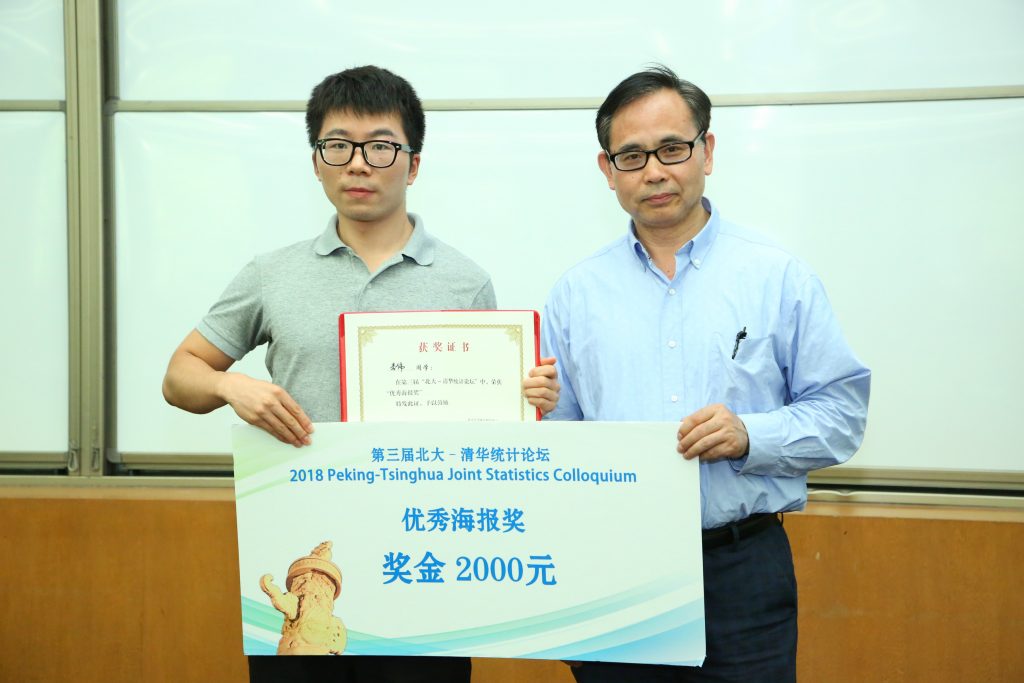

 经两校老师现场考核、评分,北京大学王亚平同学荣获“优秀毕业生奖”,北京大学李伟、清华大学姜瑛恺、张园园荣获“优秀海报奖”。
经两校老师现场考核、评分,北京大学王亚平同学荣获“优秀毕业生奖”,北京大学李伟、清华大学姜瑛恺、张园园荣获“优秀海报奖”。
